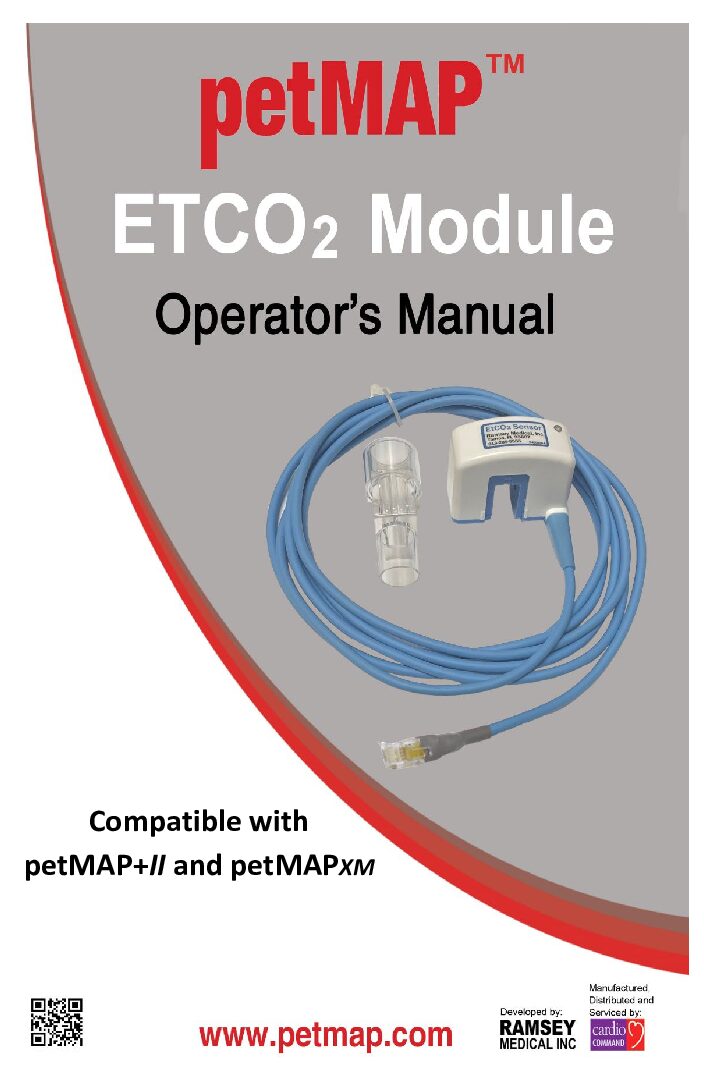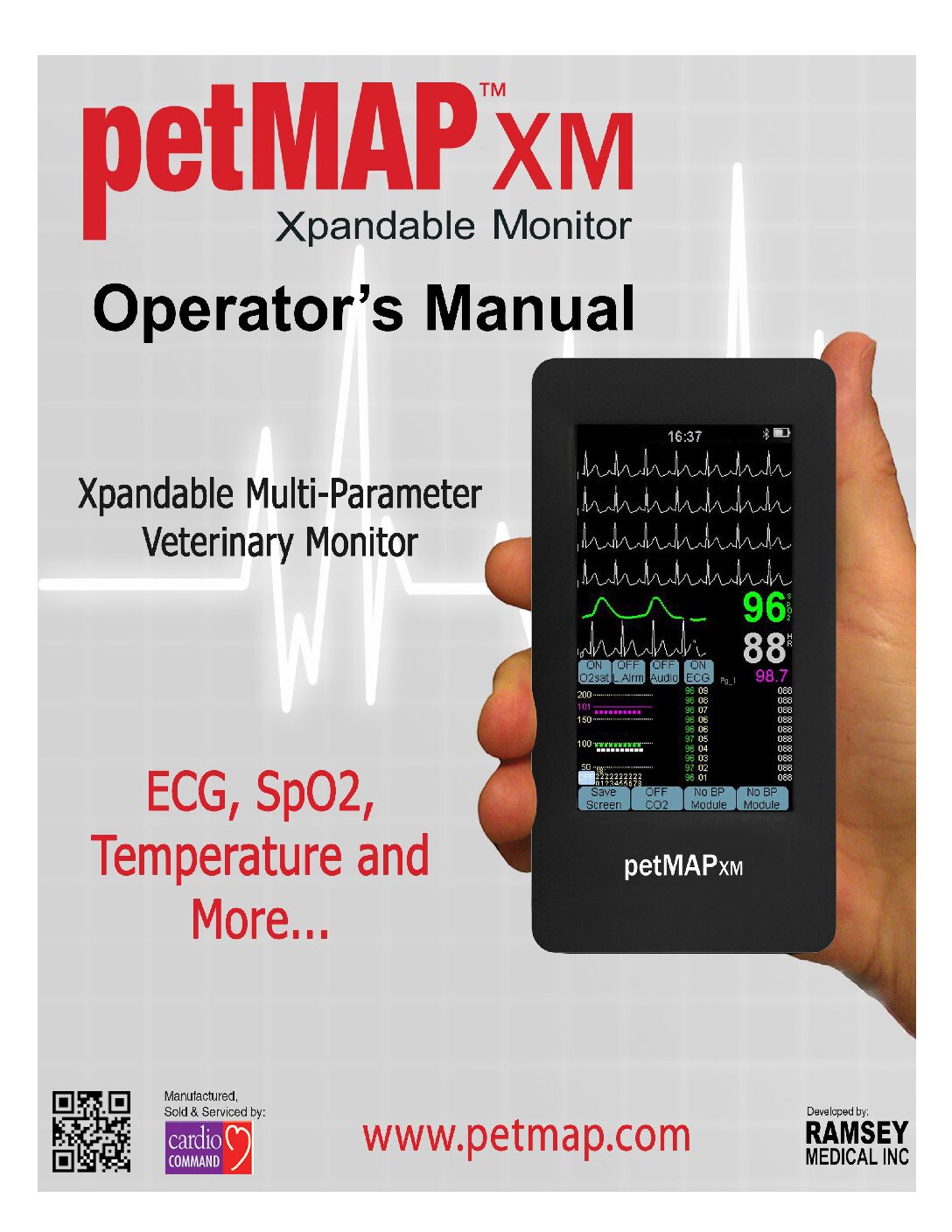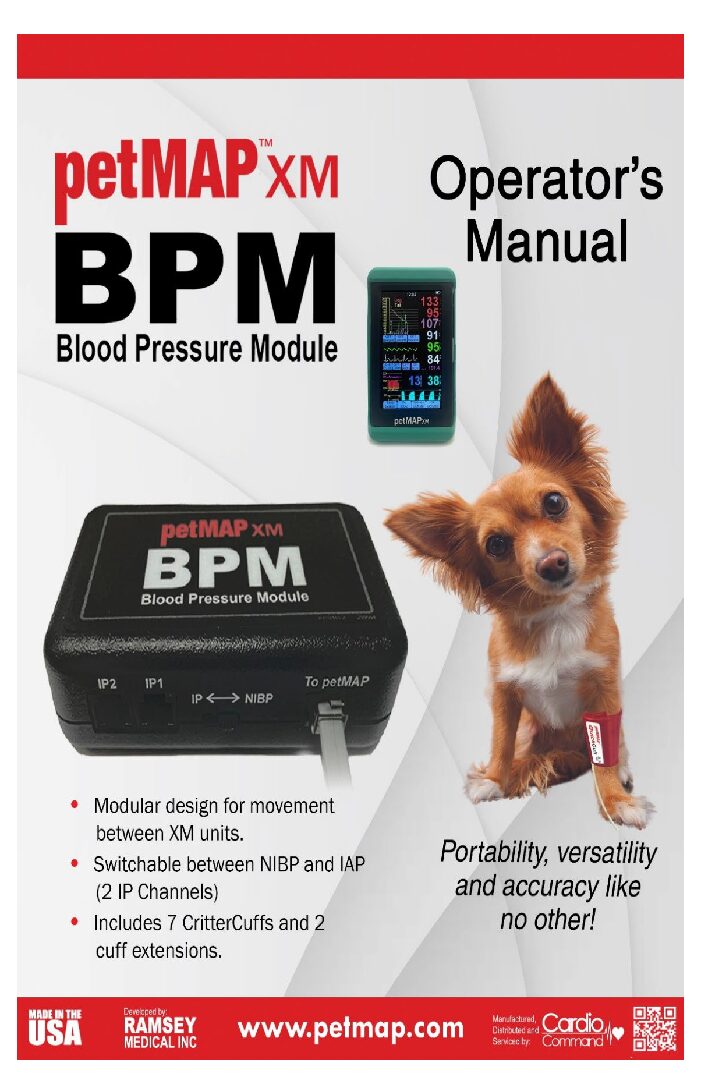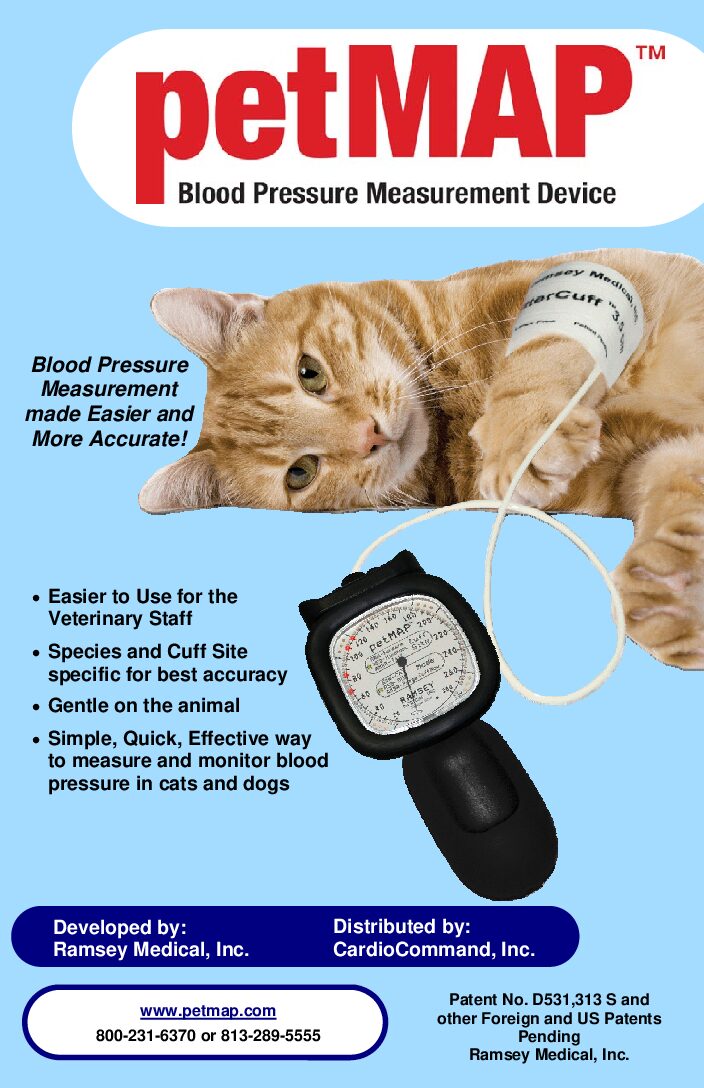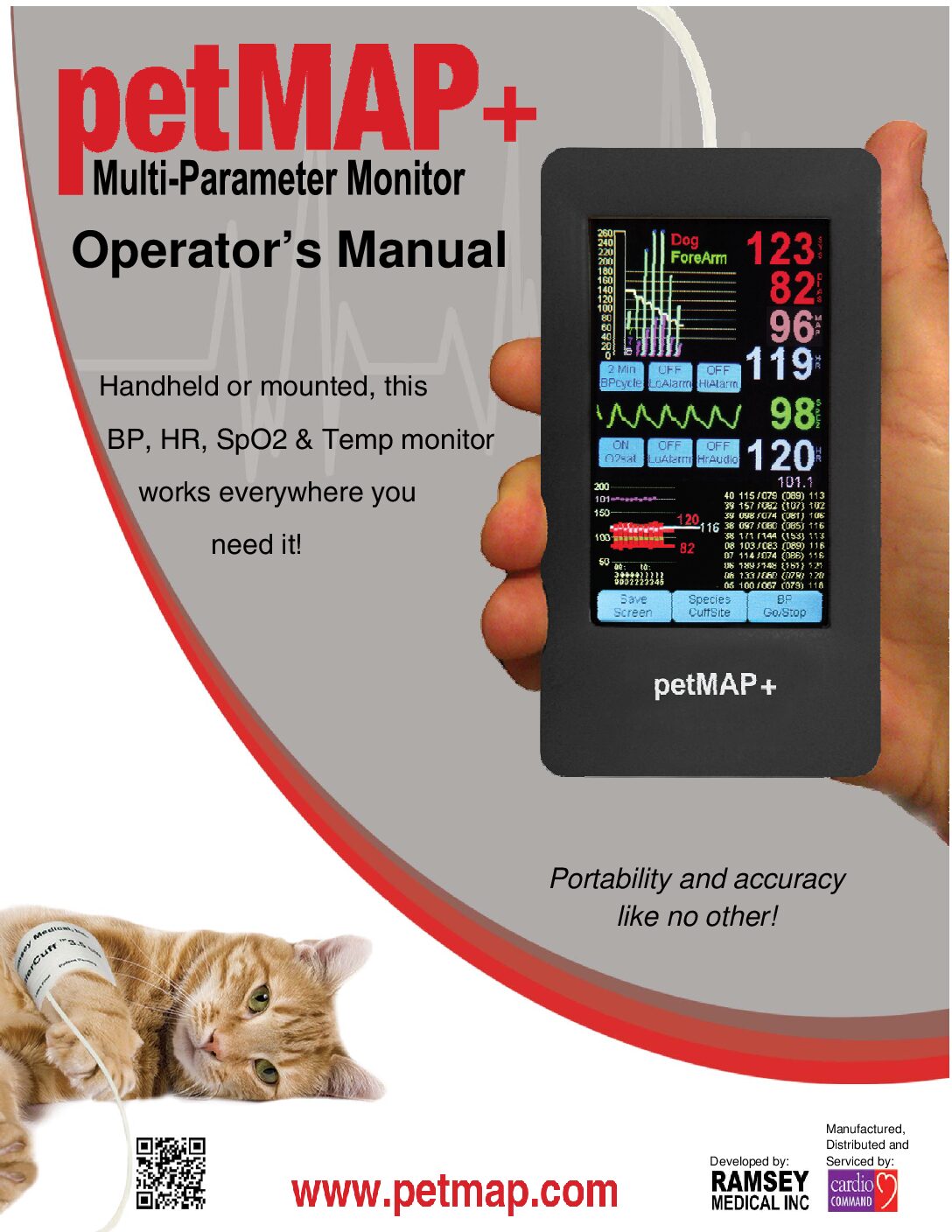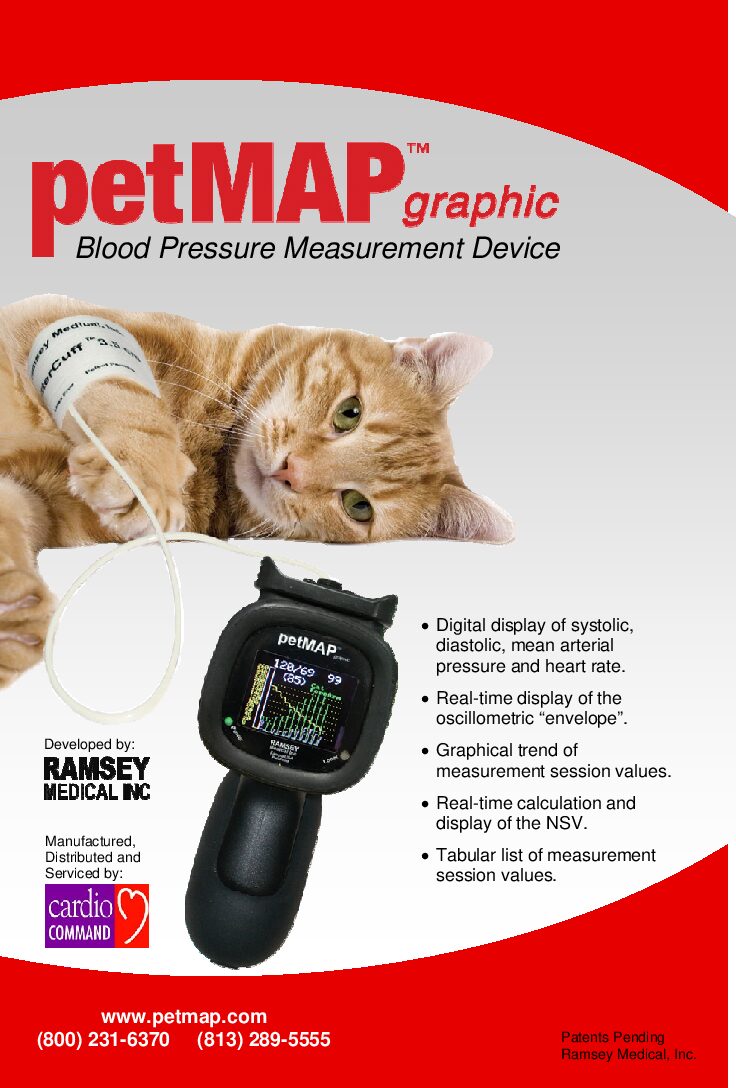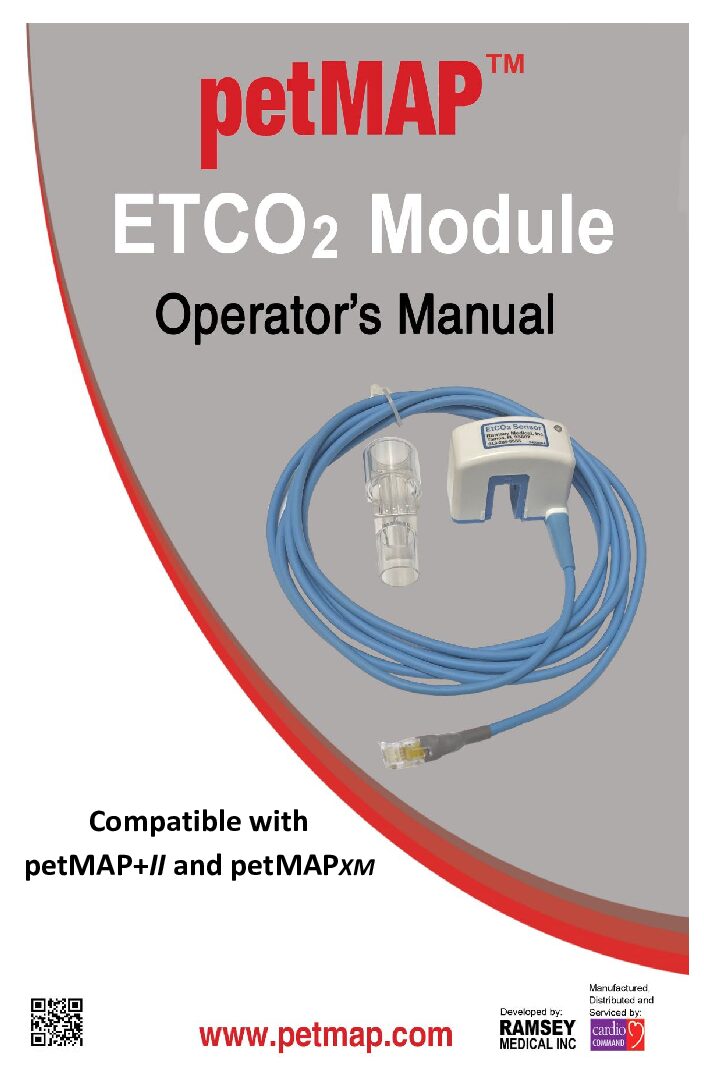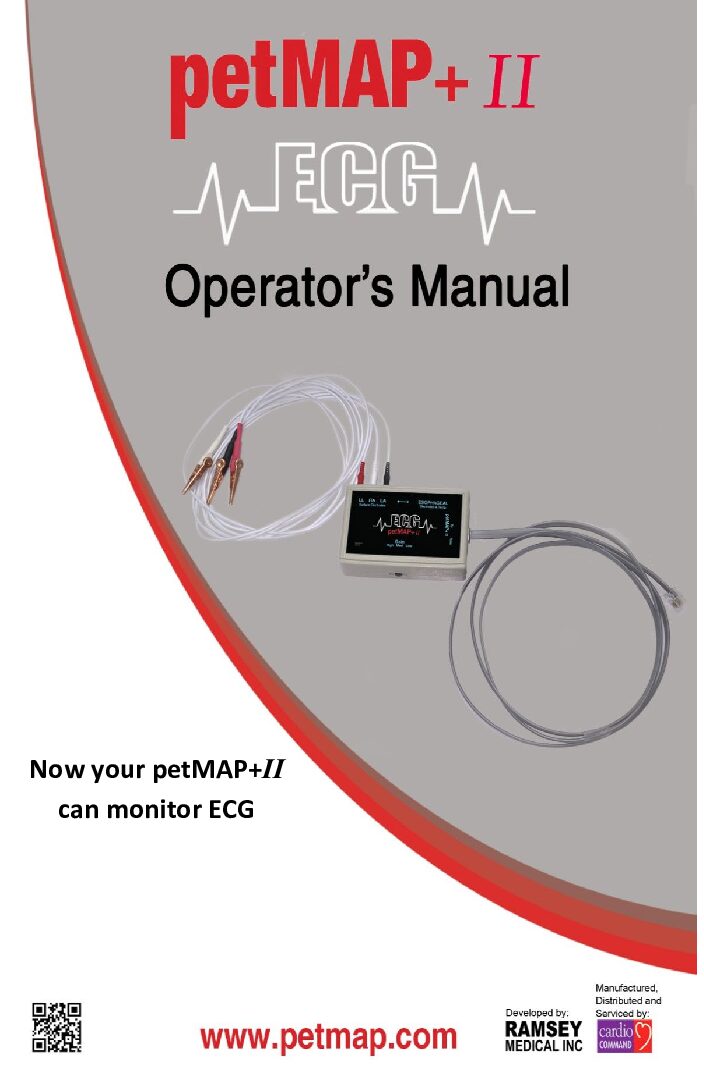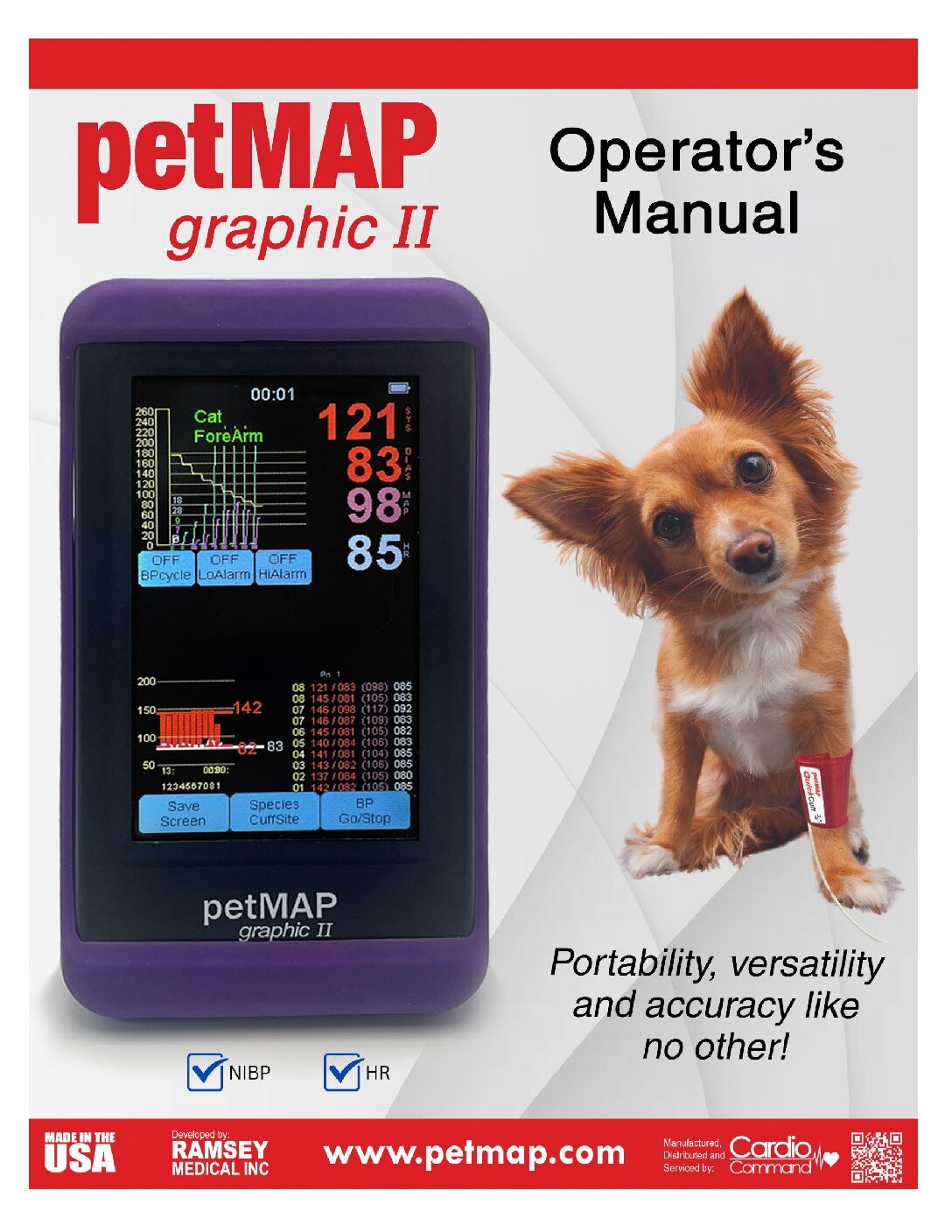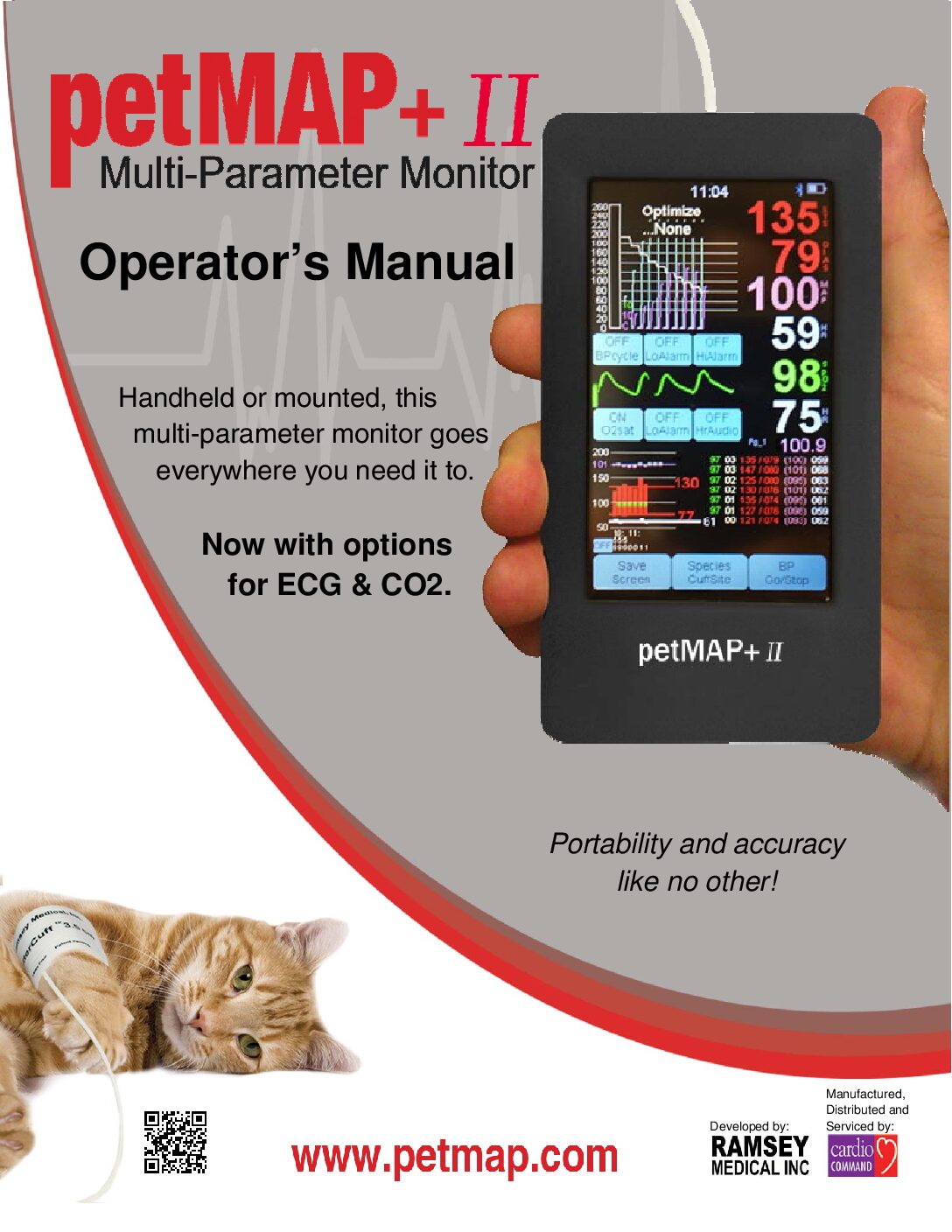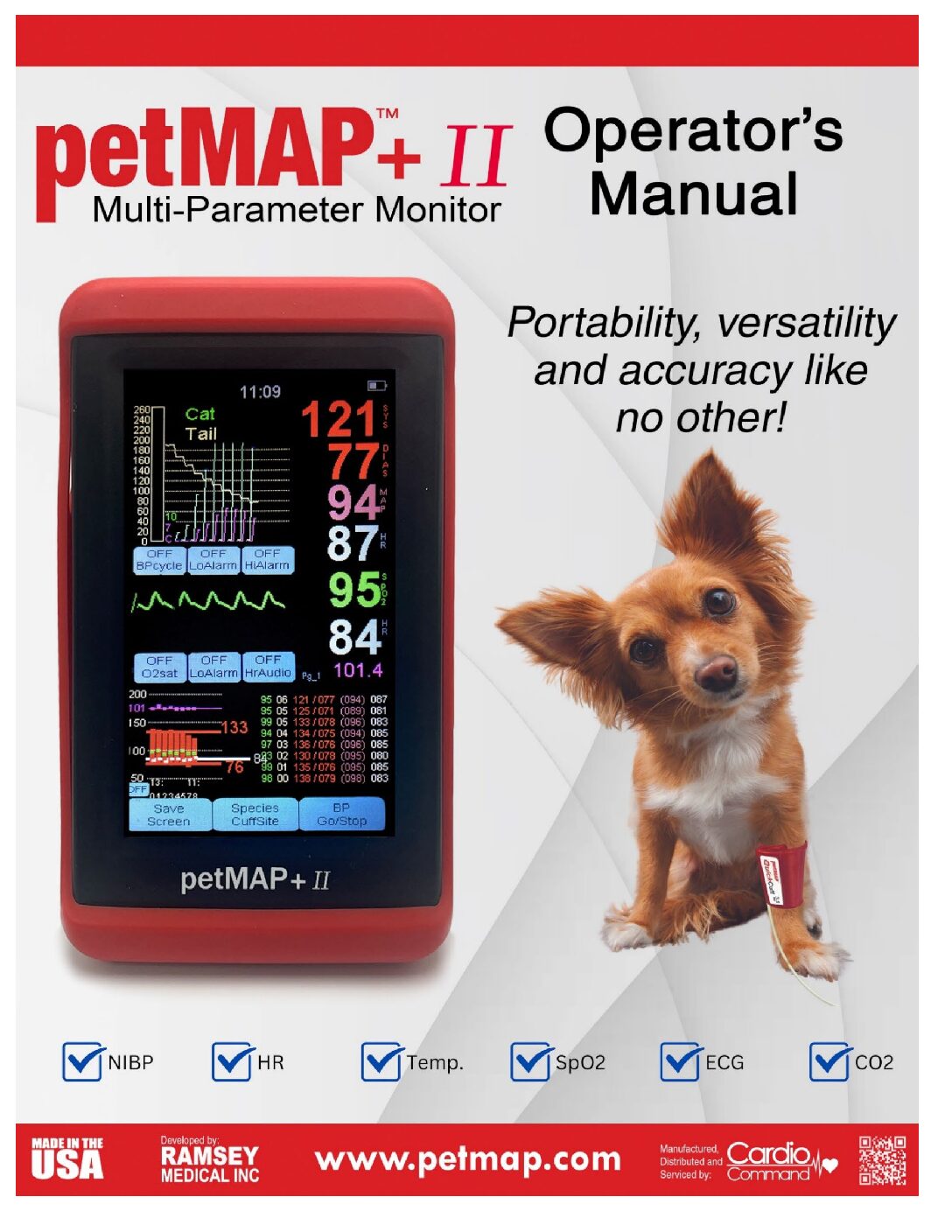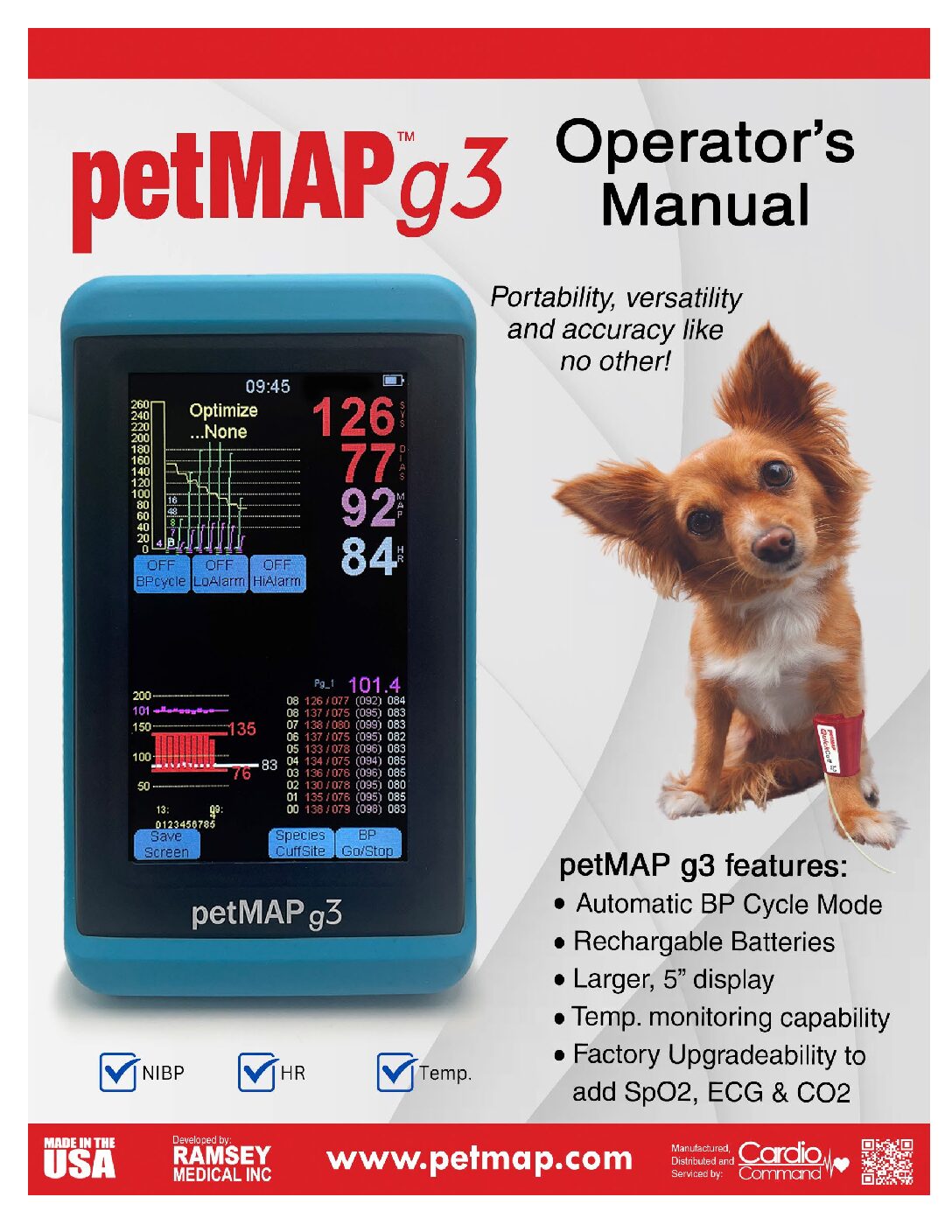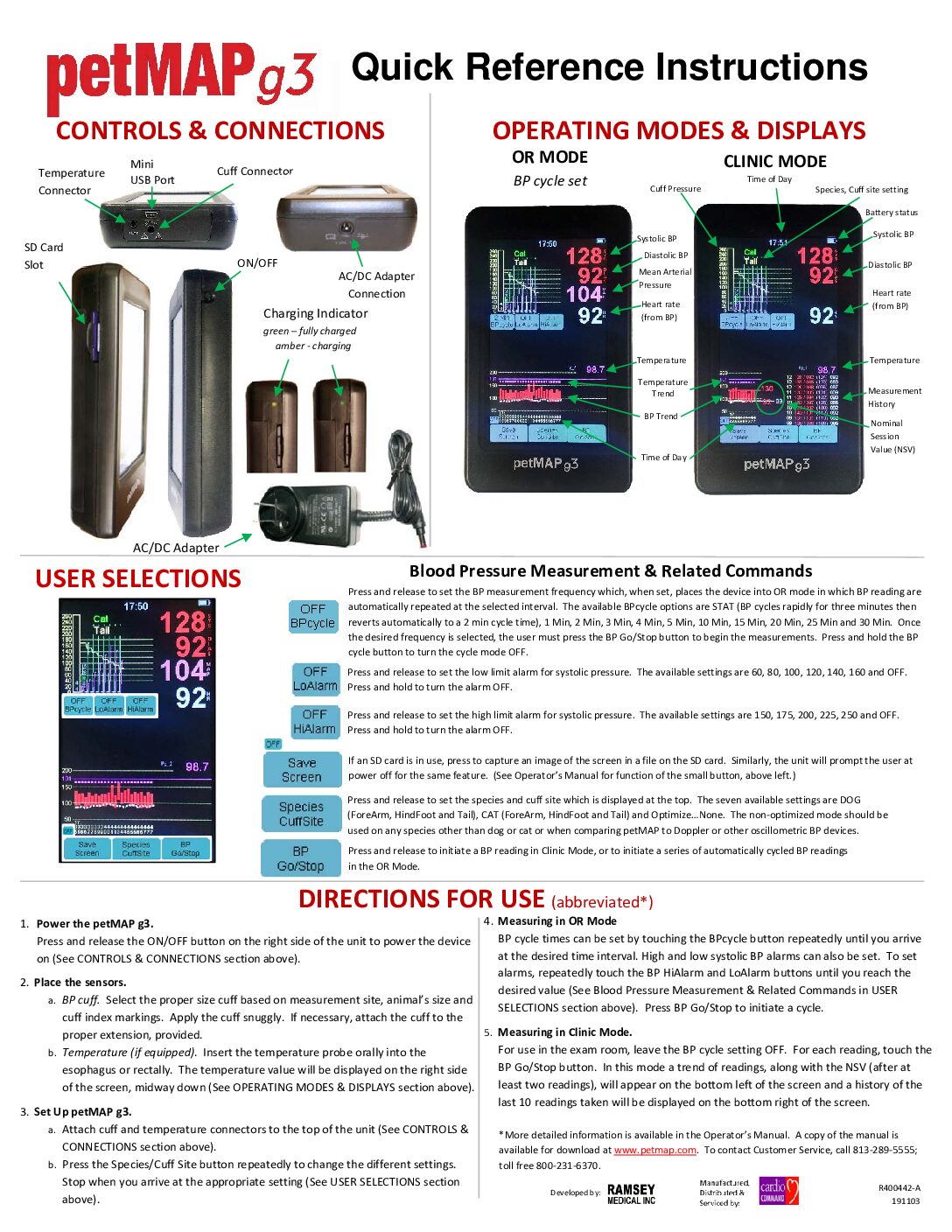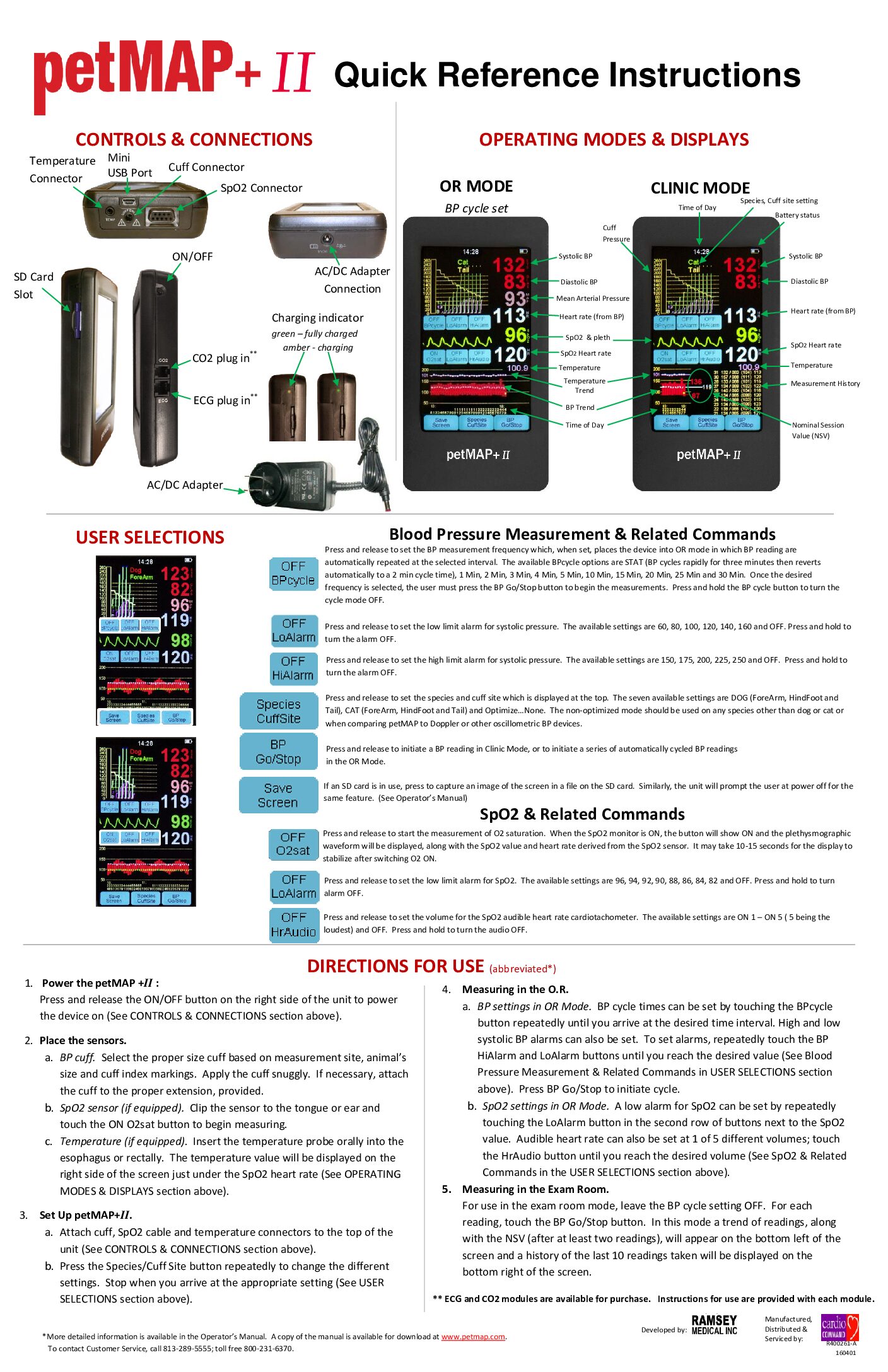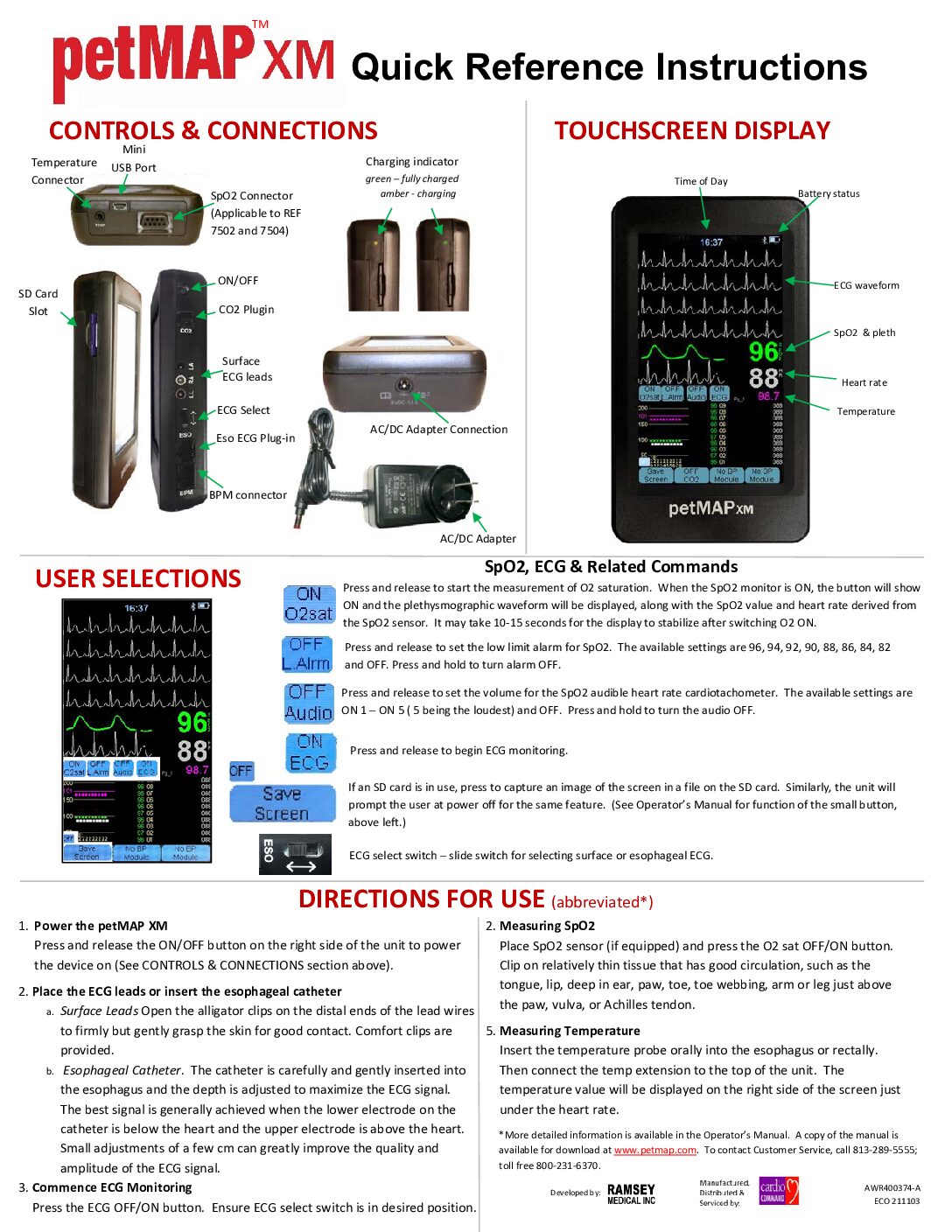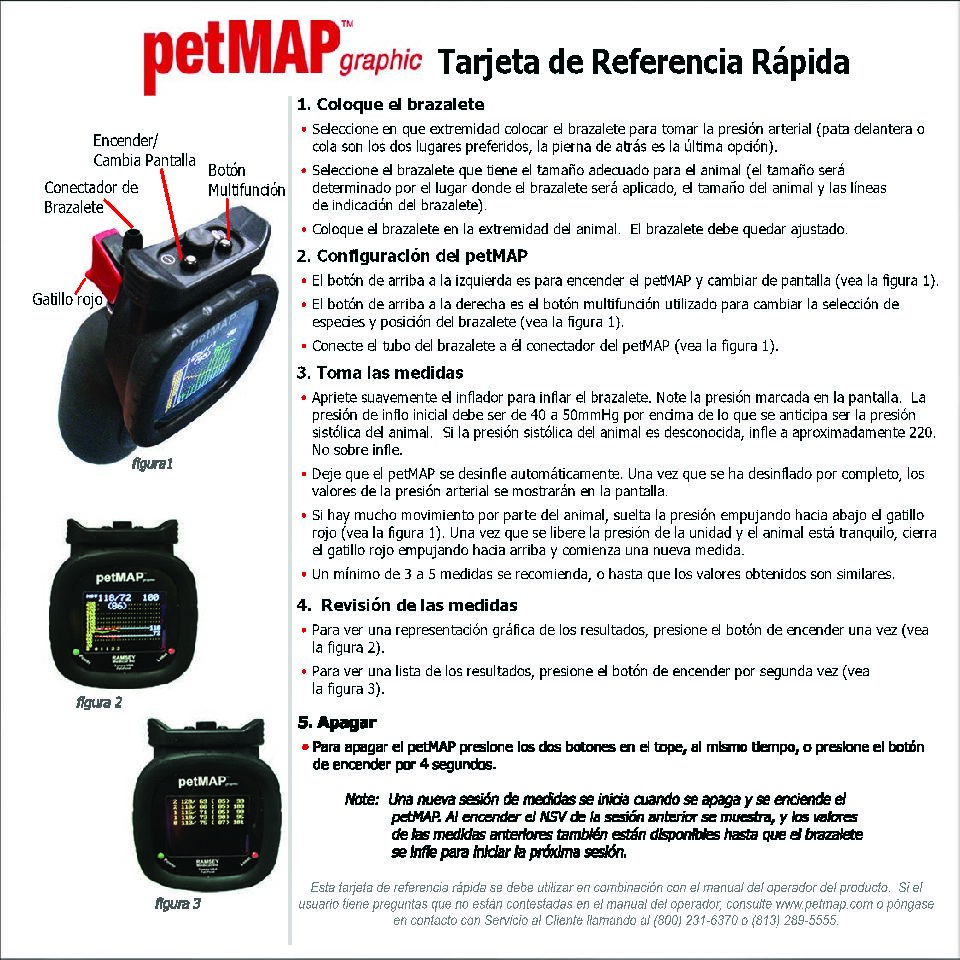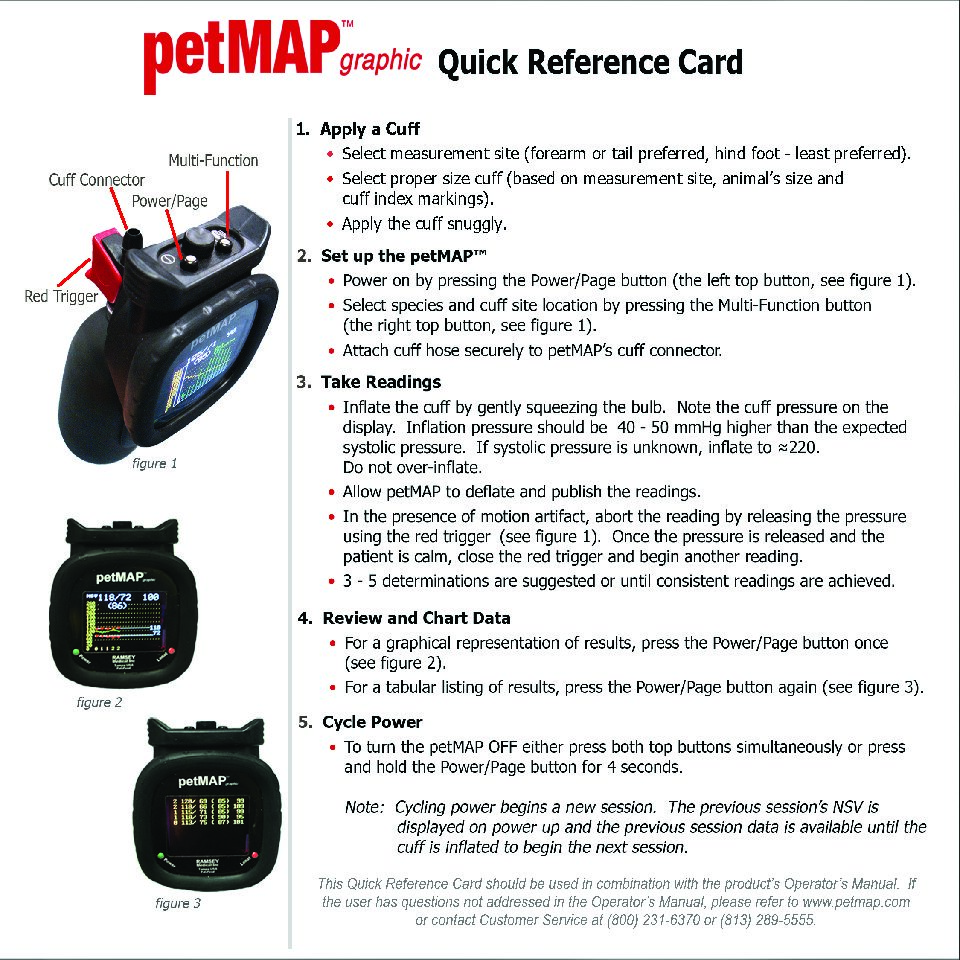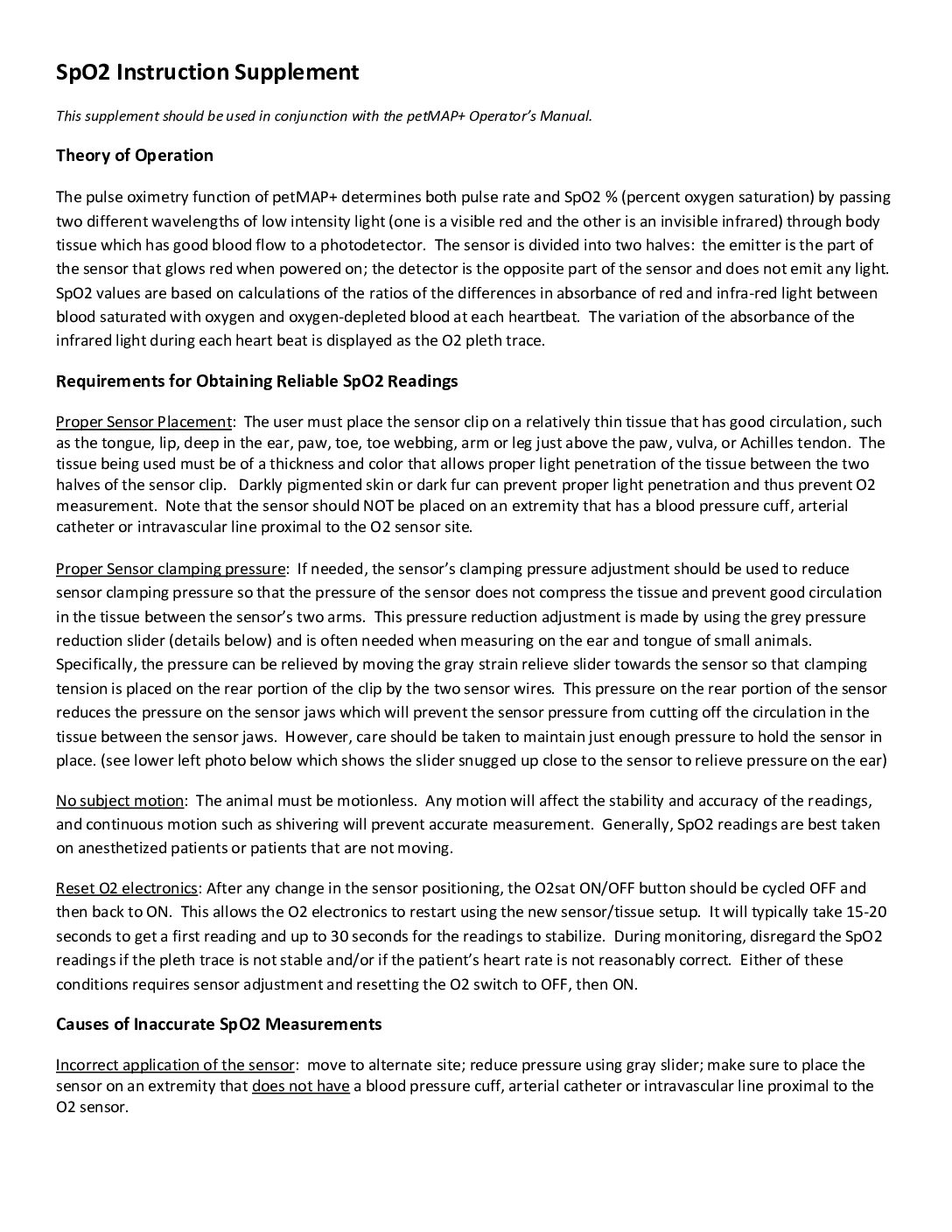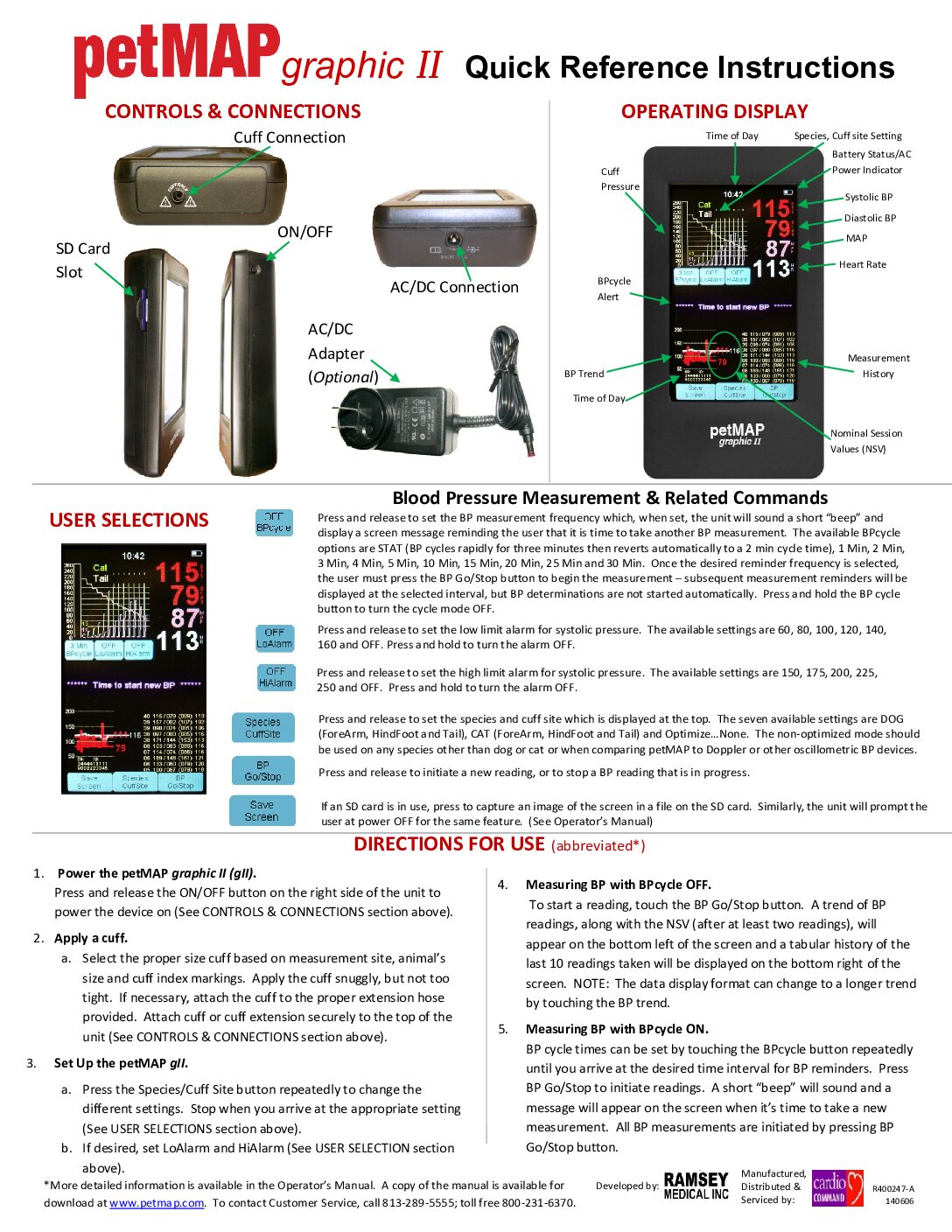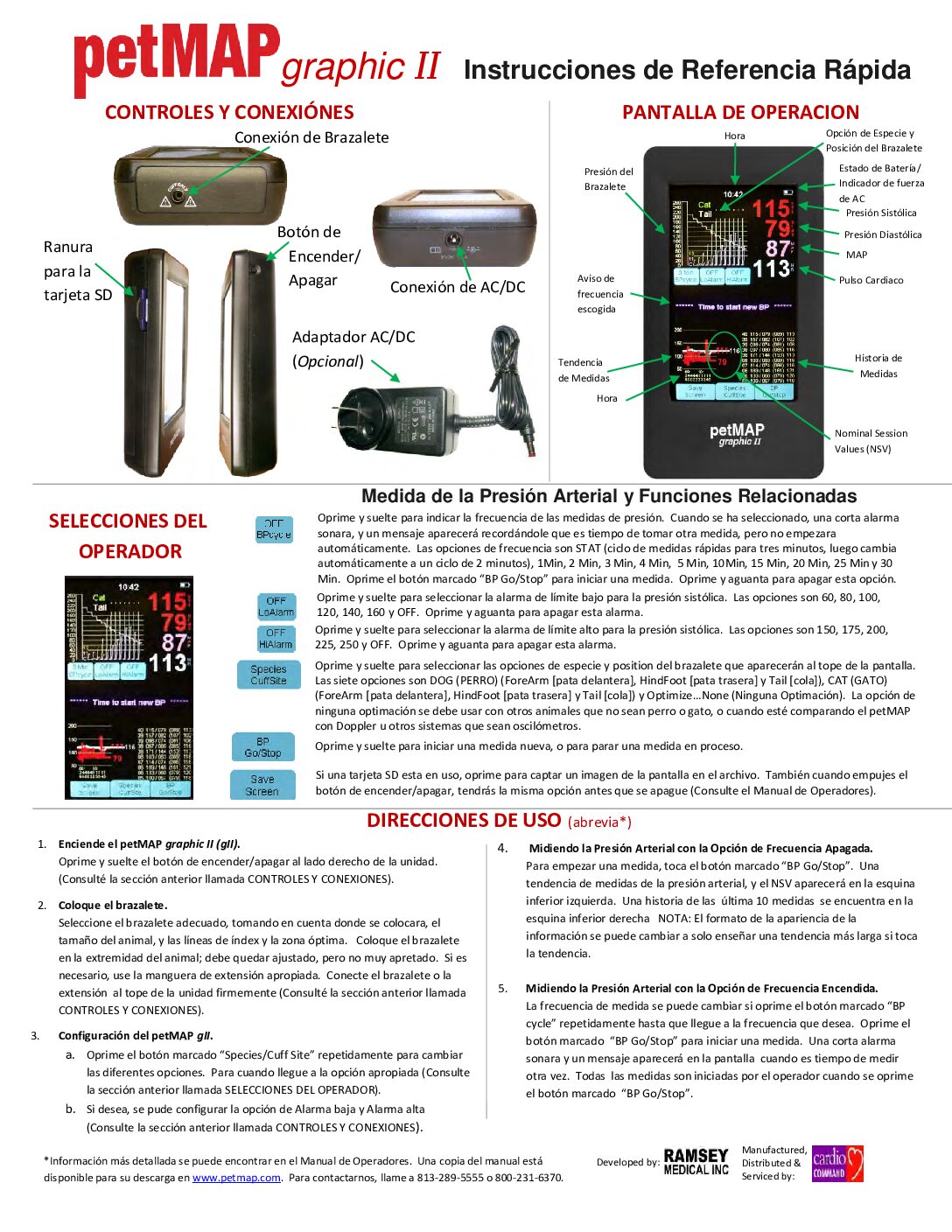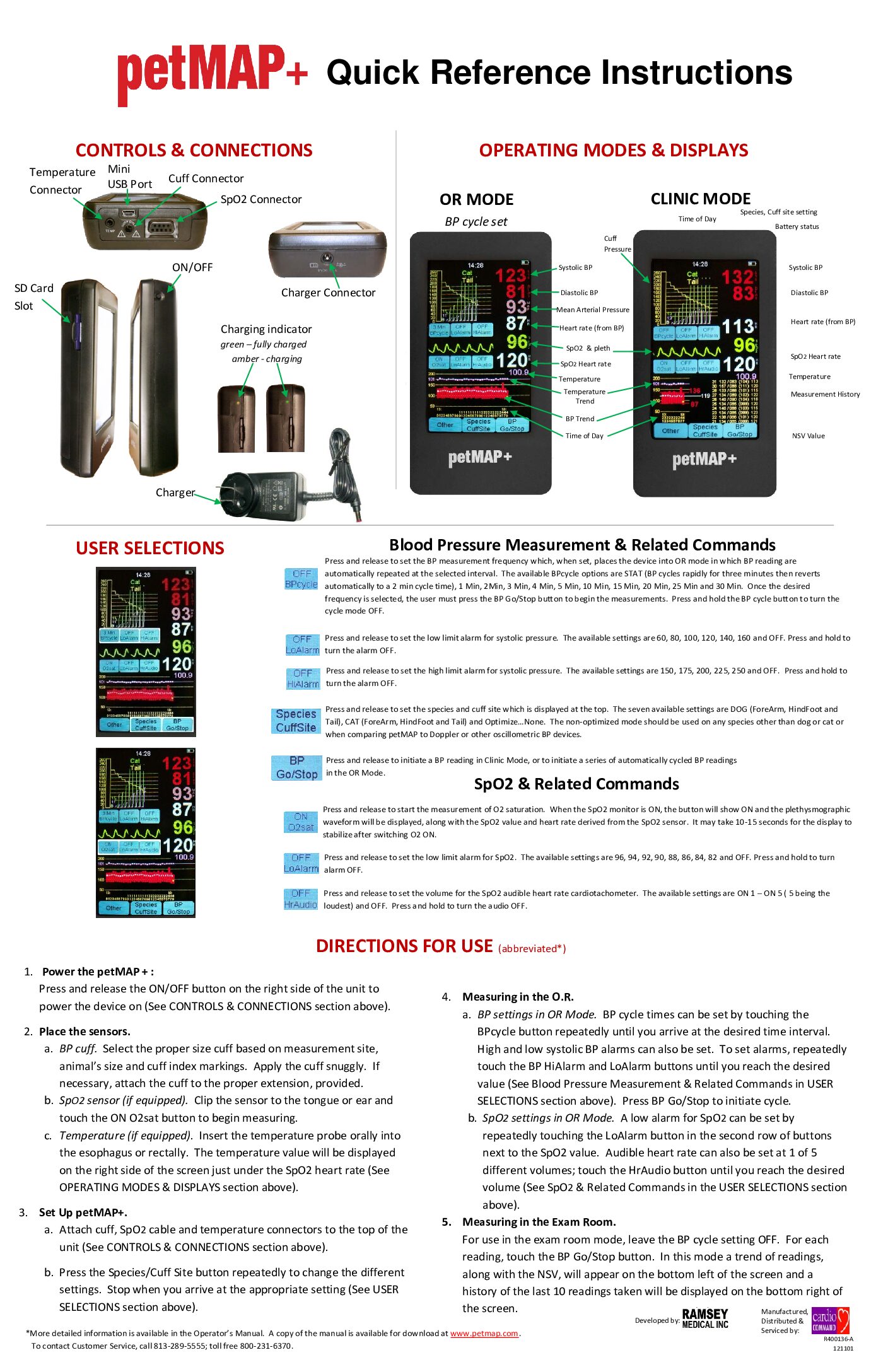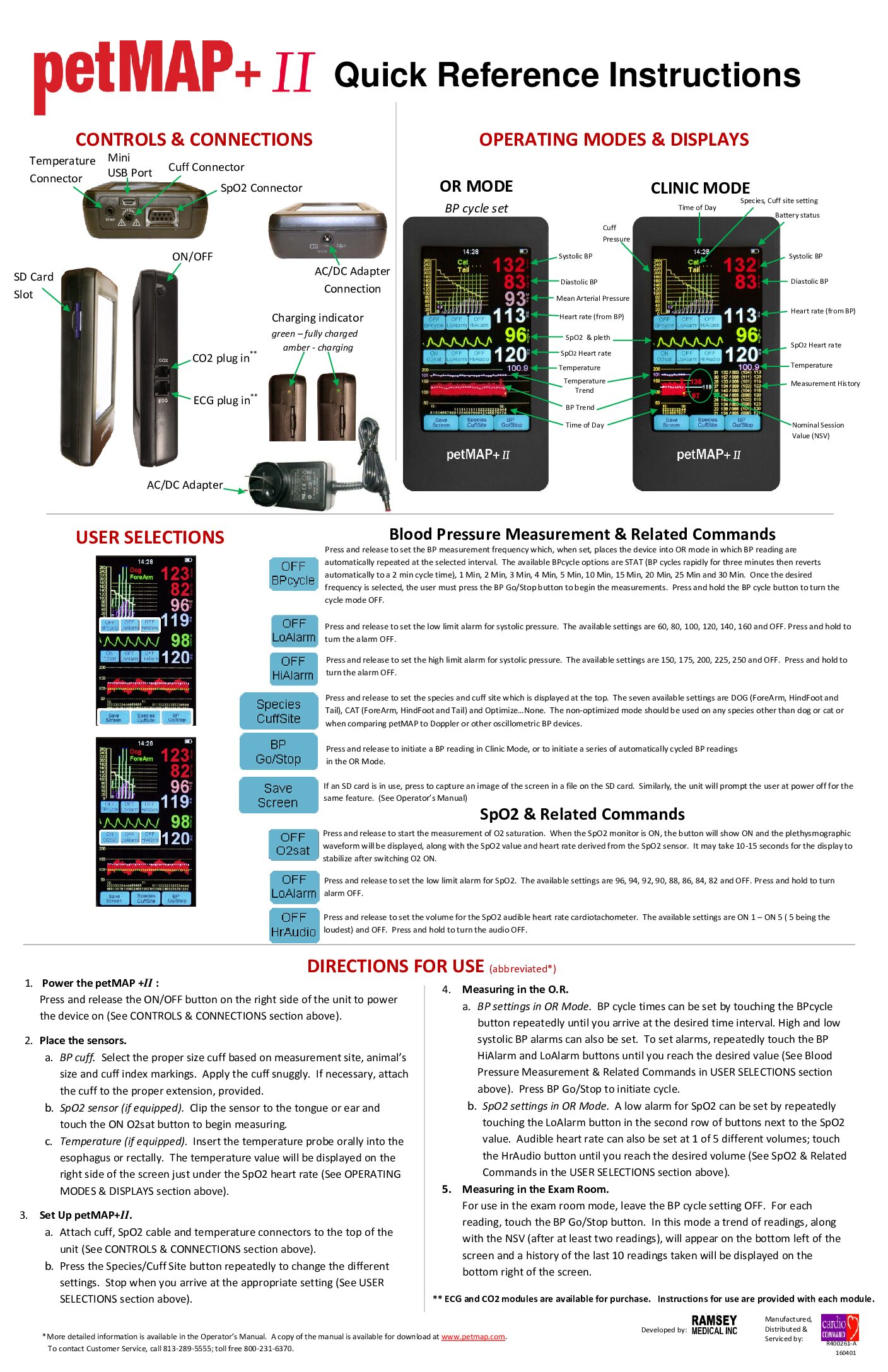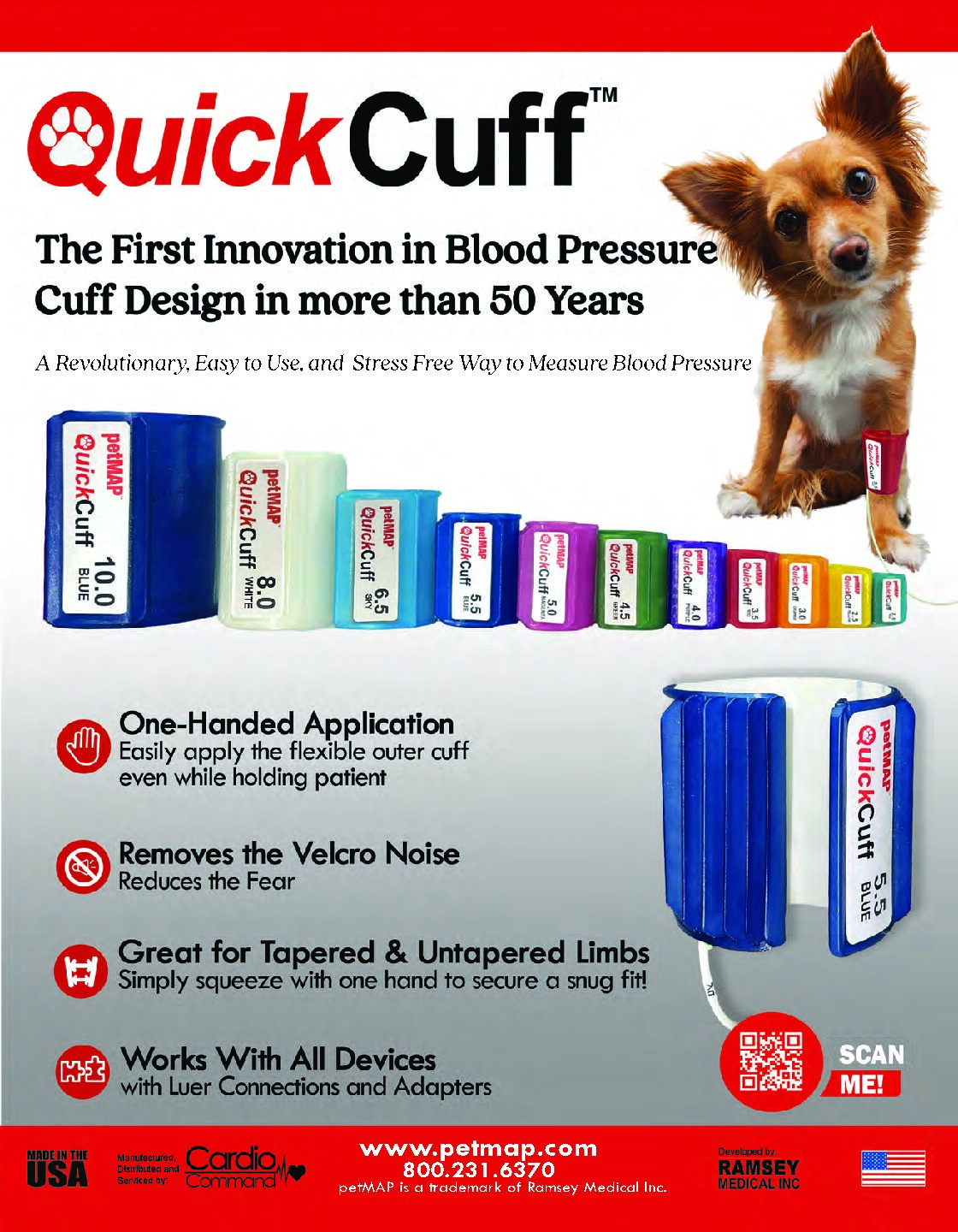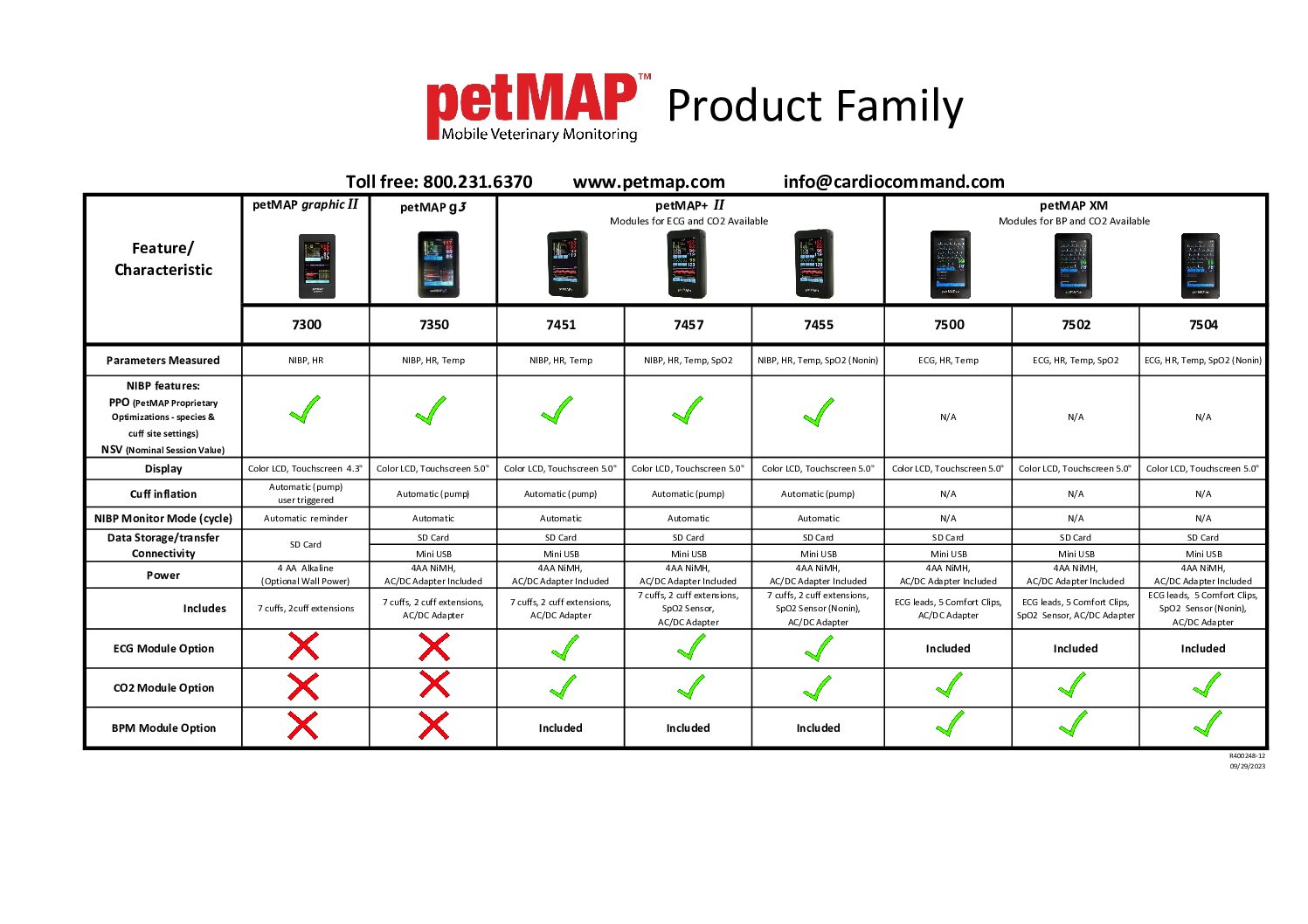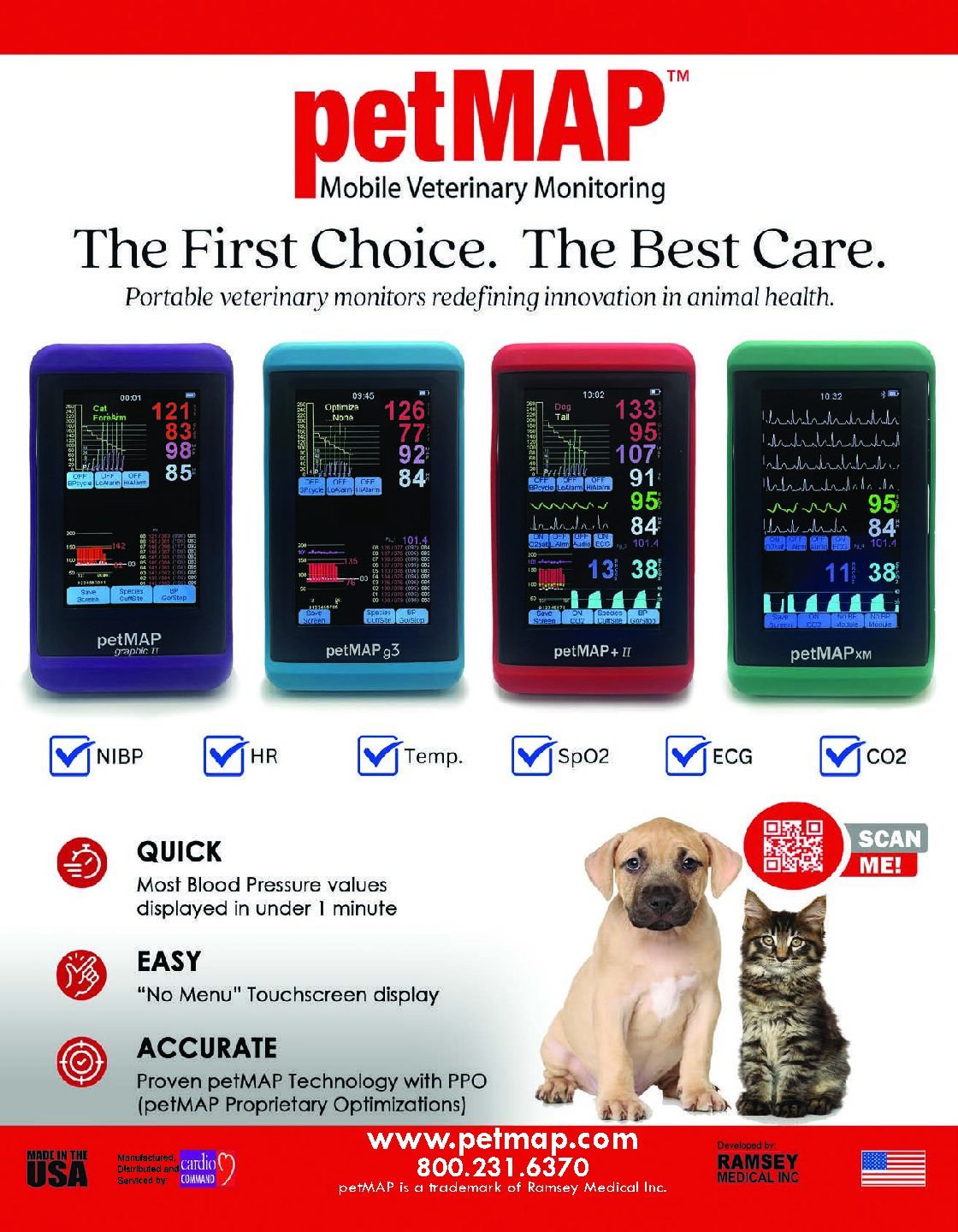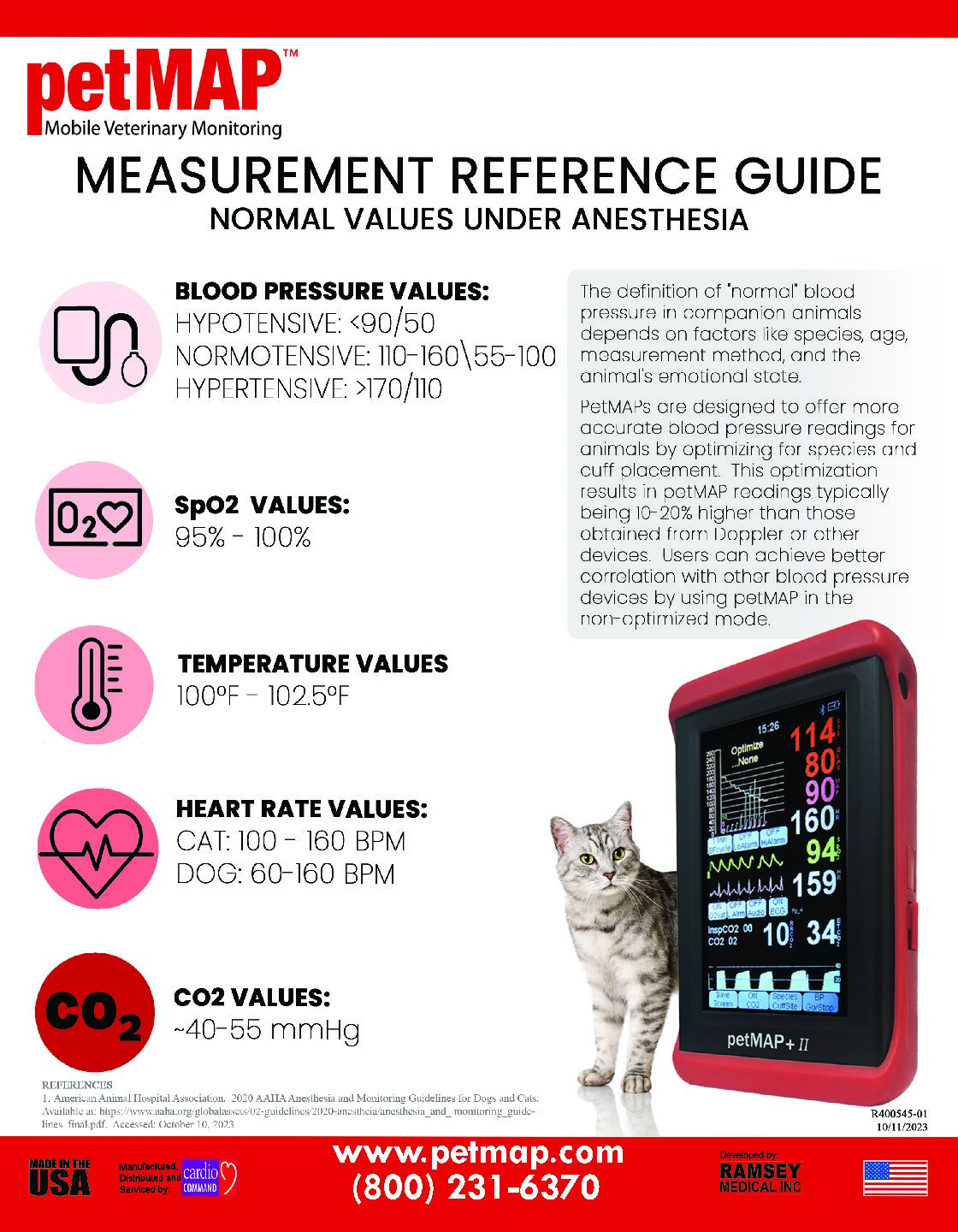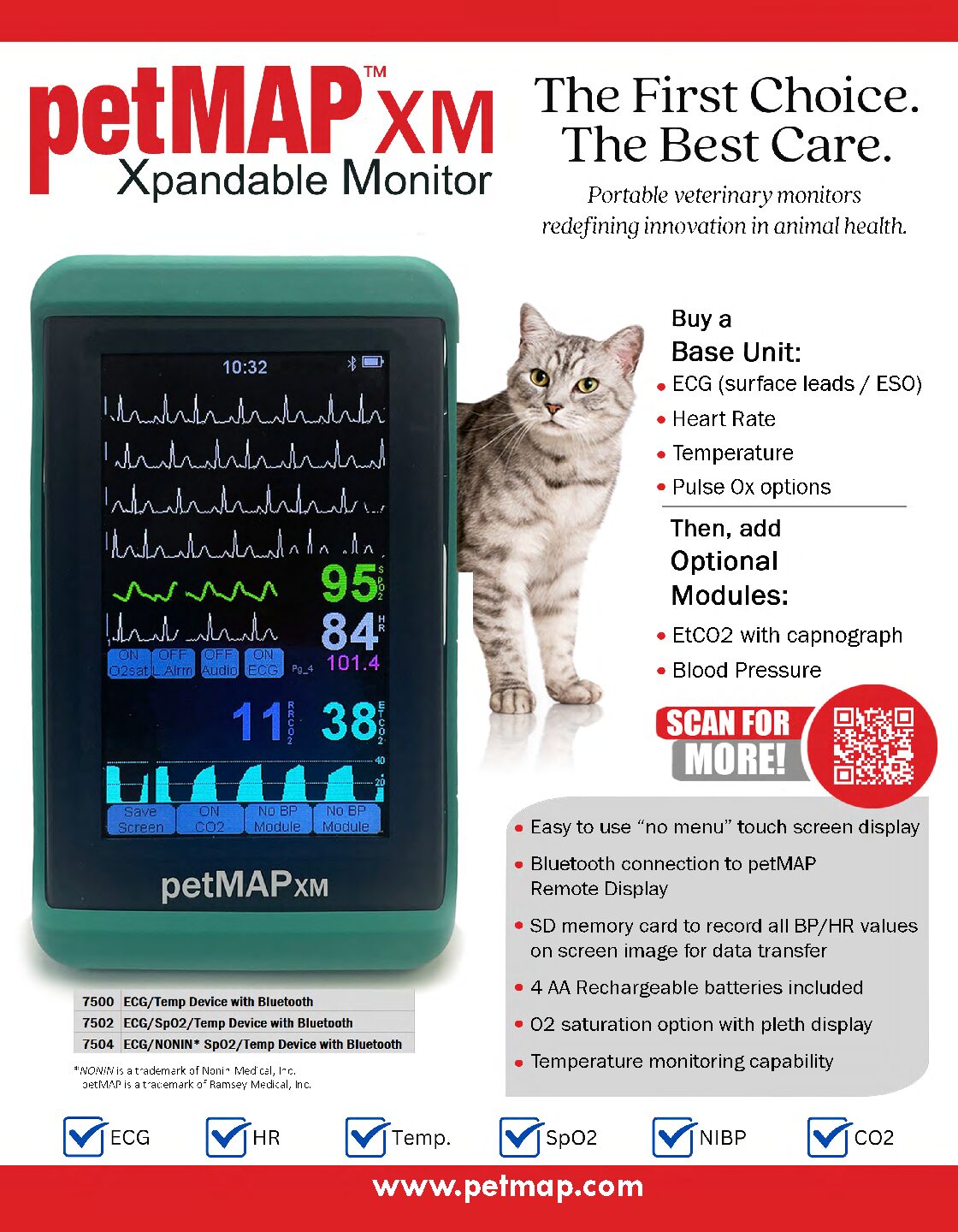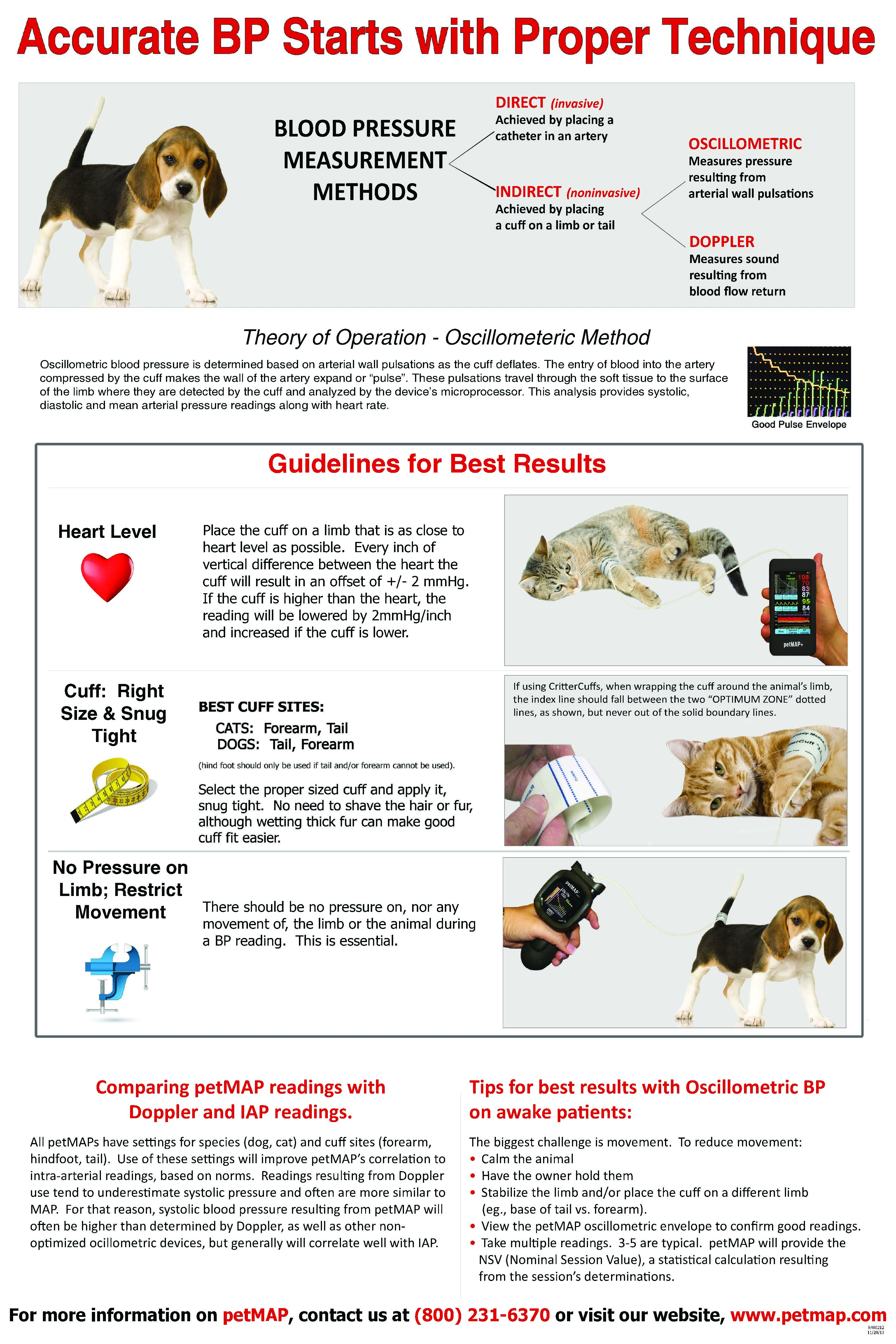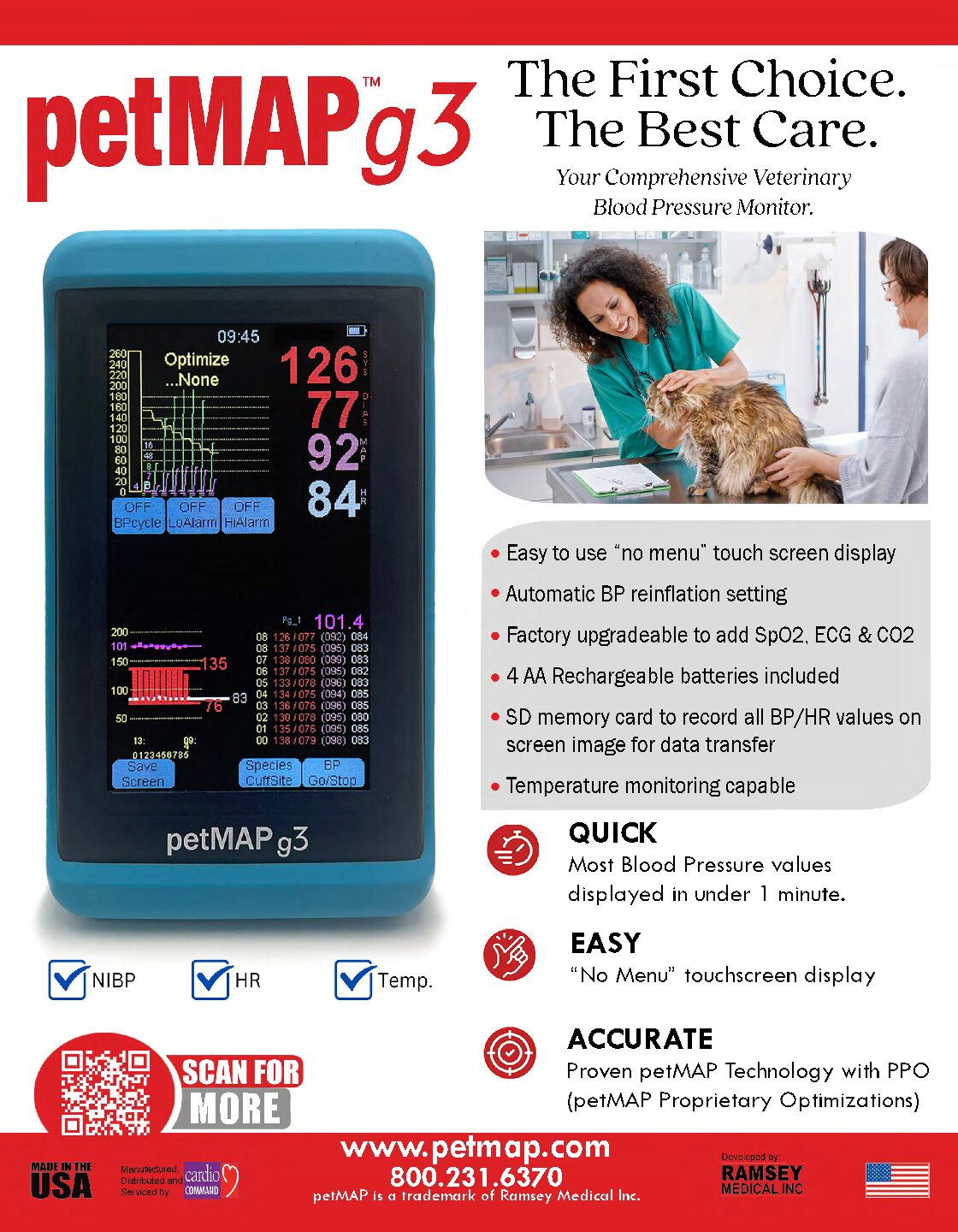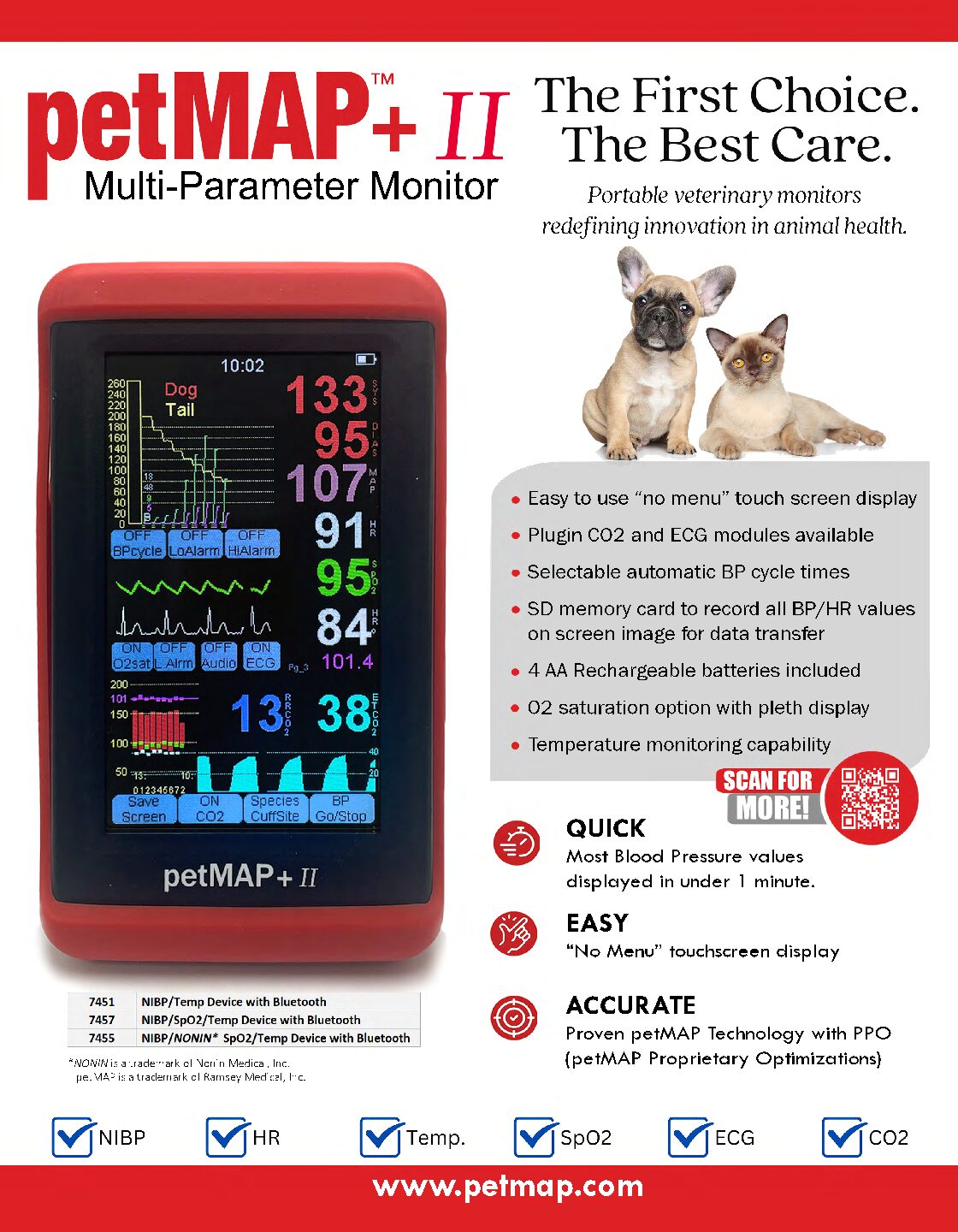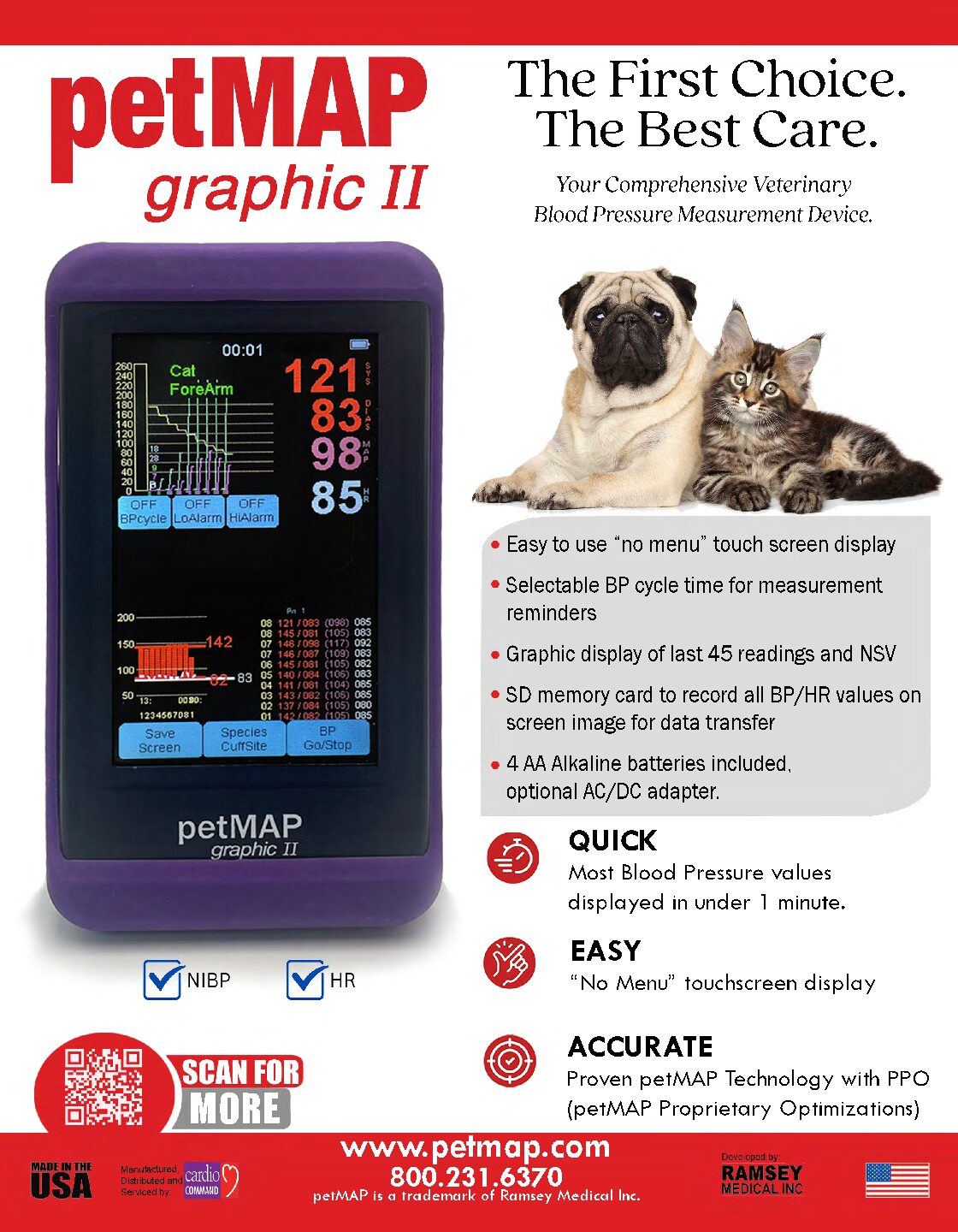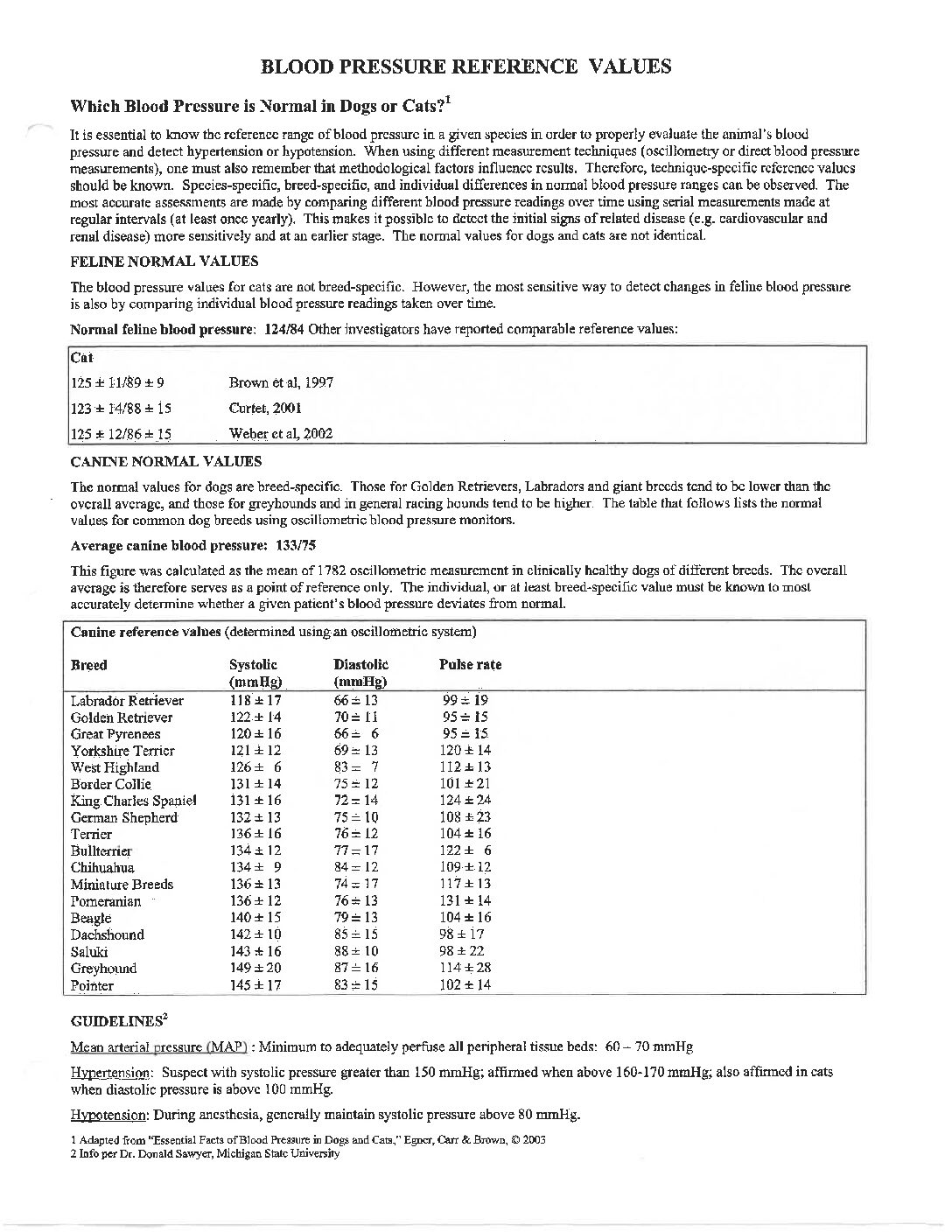QuickCuff Video
petMAP+ II Inservice Video
Vet BP with petMAP (1st generation petMAP)
Learn more
Veterinary blood pressure devices don’t have to be difficult and cumbersome. With petMAP, measuring blood pressure on animals can be quick and easy. Accurate animal blood pressure measurements begin with using the correct size cuff. petMAP comes bundled with 7 cuffs sized from 2.0cm to 5.5cm. Larger blood pressure cuffs are also available for large breed dogs and large animals.
This video not only will walk you through using the petMAP classic, it also provides tips and hints on how to get the most accurate animal blood pressure readings.
The petMAP animal blood pressure device is quick, easy and accurate.
Companion Animal BP Accuracy Study Abstracts
A companion animal’s blood pressure can be measured using one of many devices. Regardless of the device used, routine screenings are critical, especially in patients with feline hypertension. In our Helpful Links you will find links to websites with information on feline hypertension causes, symptoms and treatments.
In the accuracy study abstract below Dr. William Muir, DVM, Phd, while at Ohio State University School of Veterinary Medicine, compares petMAP, Dopper, DinaMAP and Cardell to simultaneously measured direct intra-arterial pressures on cats and dogs. When measuring the companion animal’s BP with petMAP, he compared the species and cuff site optimized blood pressure readings.
Accuracy of a Species and Cuff Site Optimized Oscillometric BP Monitor in Cats
Prepared by
William Muir DVM, PhD, ACVA, ACVECC
The Ohio State University, Columbus, Ohio 43210
petMAP is a new device for the indirect measurement of BP in dogs and cats using the oscillometric technique. The petMAP’s small size makes it uniquely versatile providing data that has been individually optimized for both dogs and cats, and cuff site (forelimb, tail, and hind limb). petMAP was tested in lightly anesthetized cats (N=10) by comparing cuff readings at all three locations to simultaneously recorded intra-arterial pressure measurements.
The mean and standard deviations of the differences between the two methods for systolic (SAP), mean (MAP), and diastolic (DAP) arterial pressure were analyzed and displayed as Bland-Altman and correlation plots. The best agreement was achieved on the forelimb. The mean and standard deviations in mmHg for the differences in SAP, MAP, and DAP were, respectively, -0.4 +/-11.2, -1.5 +/-5.2, -2.1 +/-6.6 (a negative mean value is underestimation of arterial pressure by the petMAP compared to intra-arterial readings). petMAP results compared favorably with:
- the results reported for the Cardell oscillometric blood pressure monitor in anesthetized cats (N=6) on the clipped forelimb (BP ranges combined):
-11.6+/-7.5, -0.9 +/-6.2 , -0.1 +/-4.1 [Ref 1], - with the Dinamap oscillometric blood pressure monitor on awake cats (N=11) tail (best site, sign of mean reversed for consistency): -9.5 +/-17.8, -21.1 +/-13.1, -17.3 +/-10.8 [Ref 2], and
- the Doppler (N=11) ultrasonic blood pressure monitor on the metatarsus (best site, sign of mean reversed for consistency, systolic only): – 9.4 +/-14.9 [Ref 2].
Our data suggests that the petMAP offers improved accuracy of systolic BP measurement in cats and provides comparable or better accuracy for MAP and diastolic pressures as compared to other popular oscillometric and Doppler devices.
References
1. Pederson, et al, J Am Vet Med Assoc 2002; 221:646-650
2. Bins, et al, J Vet Int Med 1995; 9:405-414
Accuracy of a Species and Cuff Site Optimized Oscillometric BP Monitor in Dogs
Prepared by
William Muir DVM, PhD, ACVA, ACVECC
The Ohio State University, Columbus, Ohio 43210
petMAP is a new device for the indirect measurement of BP in dogs and cats using the oscillometric technique. The petMAP’s small size makes it uniquely versatile providing data that has been individually optimized for both dogs and cats, and cuff site (forelimb, tail, and hind limb). petMAP was tested in lightly anesthetized dogs (N=10) by comparing cuff readings at all three locations to simultaneously recorded intra-arterial pressure measurements.
The mean and standard deviations of the differences between the two methods for systolic (SAP), mean (MAP), and diastolic (DAP) arterial pressure were analyzed and displayed as Bland-Altman and correlation plots. The best agreement was achieved on the tail. The mean and standard deviations in mmHg for the differences in SAP, MAP, and DAP were, respectively, -1.64 +/-11.9, -6.16 +/-8.2, -6.1 +/-7.7 (a negative mean value is underestimation of arterial pressure by the petMAP compared to intra-arterial readings).
petMAP results compared favorably with:
- the results reported for the Cardell oscillometric blood pressure monitor in anesthetized dogs (N=6) metatarsus (best site, sign of mean reversed for consistency): -7 +/-11, -11 +/-6, -13 +/-6 [Ref 1],
- with the Dinamap oscillometric blood pressure monitor on awake dogs (N=12) tail (best site, sign of mean reversed for consistency): -20.0 +/-18.2, -10.80 +/- 5.6, -5.3 +/-15.3 [Ref 2], and
- the Doppler (N=12) ultrasonic blood pressure monitor on the metatarsus (best site, sign of mean reversed for
consistency, systolic only): -11.6 +/-19.7 [Ref 2].
Our data suggests that the petMAP offers improved accuracy of BP measurement in dogs compared to other popular oscillometric and Doppler devices.
References
1. Sawyer, et al, Veterinary Anesthesia and Analgesia, 2004; 31:27-39.
2. Haberman, et al, Can J Vet Res , 2006; 70:211-217.
Helpful Links
High Blood Pressure in our Pets
The retina of the eye is especially at risk, with either sudden or gradual blindness often being the first sign of latent high blood pressure. The kidney also is a target as it relies…
Feline Hypertension 2
Elevated blood pressure – properly called systemic arterial hypertension – is an increase in the systolic or diastolic arterial blood pressure (ABP) . . .
Feline Hypertension
Feline hypertension is commonly found as a complication of other underlying medical conditions (so-called ‘secondary hypertension’), although primary hypertension . . .
